Last Updated on January 17, 2021
By 8 am we had reached Hospet, a sleepy nondescript town, 20 km from Hampi.

We took an auto from the bus stand to the Karnataka State Tourism Development Corporation (KSTDC) owned Mayura Bhuvaneshwari.
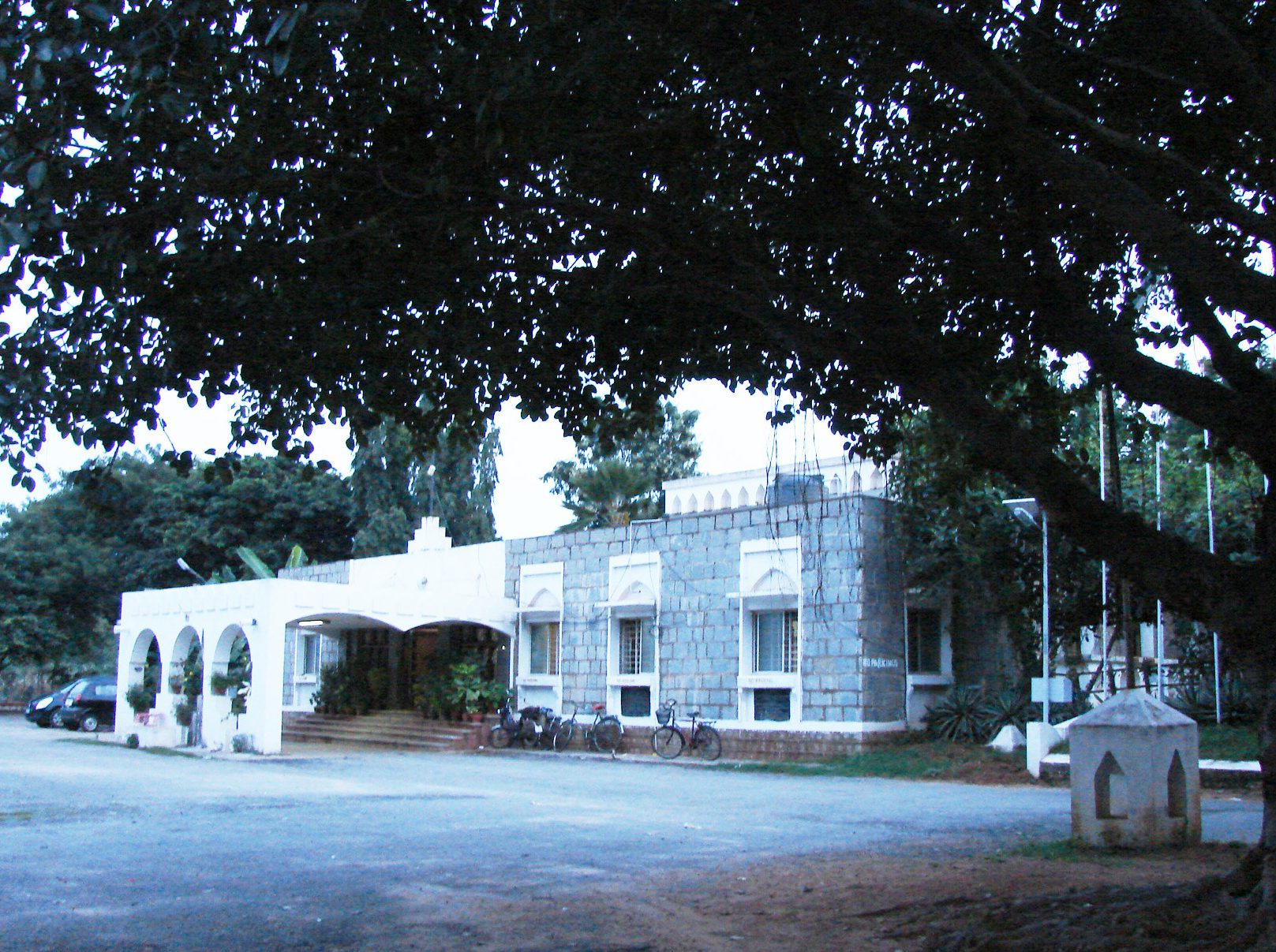
Mayura Bhuvaneshwari
Mayura Bhuvaneshwari is an ideal choice to stay in as it is very close to Hampi. Hospet is a bit too far off for anyone keen on staying in the thick of the Hampi action. This resort is in Kamalapura and it is a further 4 km to Hampi Bazaar but a much better bet than the accommodation options in the Bazaar area.
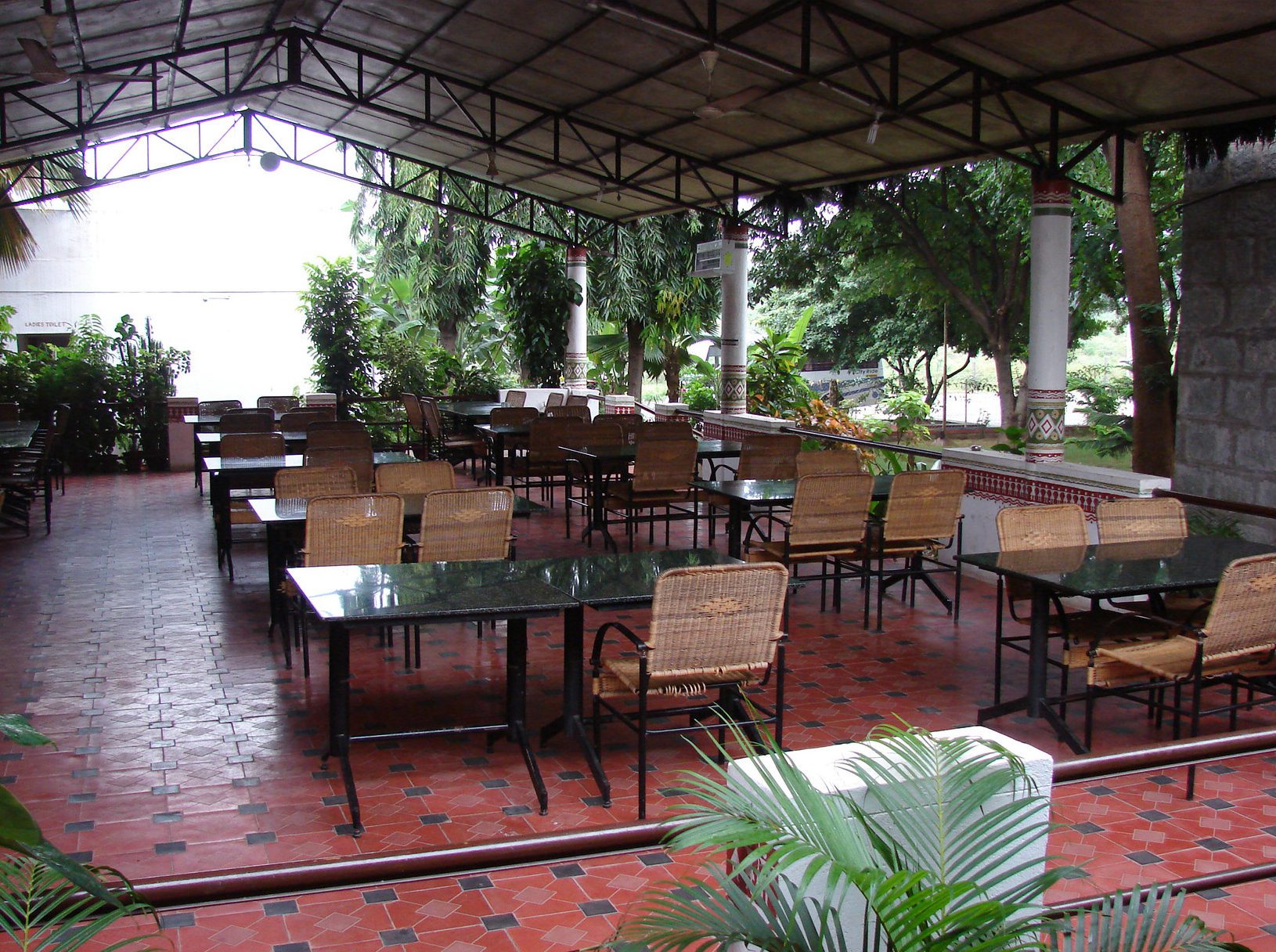
The complex is sprawling and peaceful and has a laidback charm to it. The reception area takes you into a large courtyard which doubles up as the dining area.
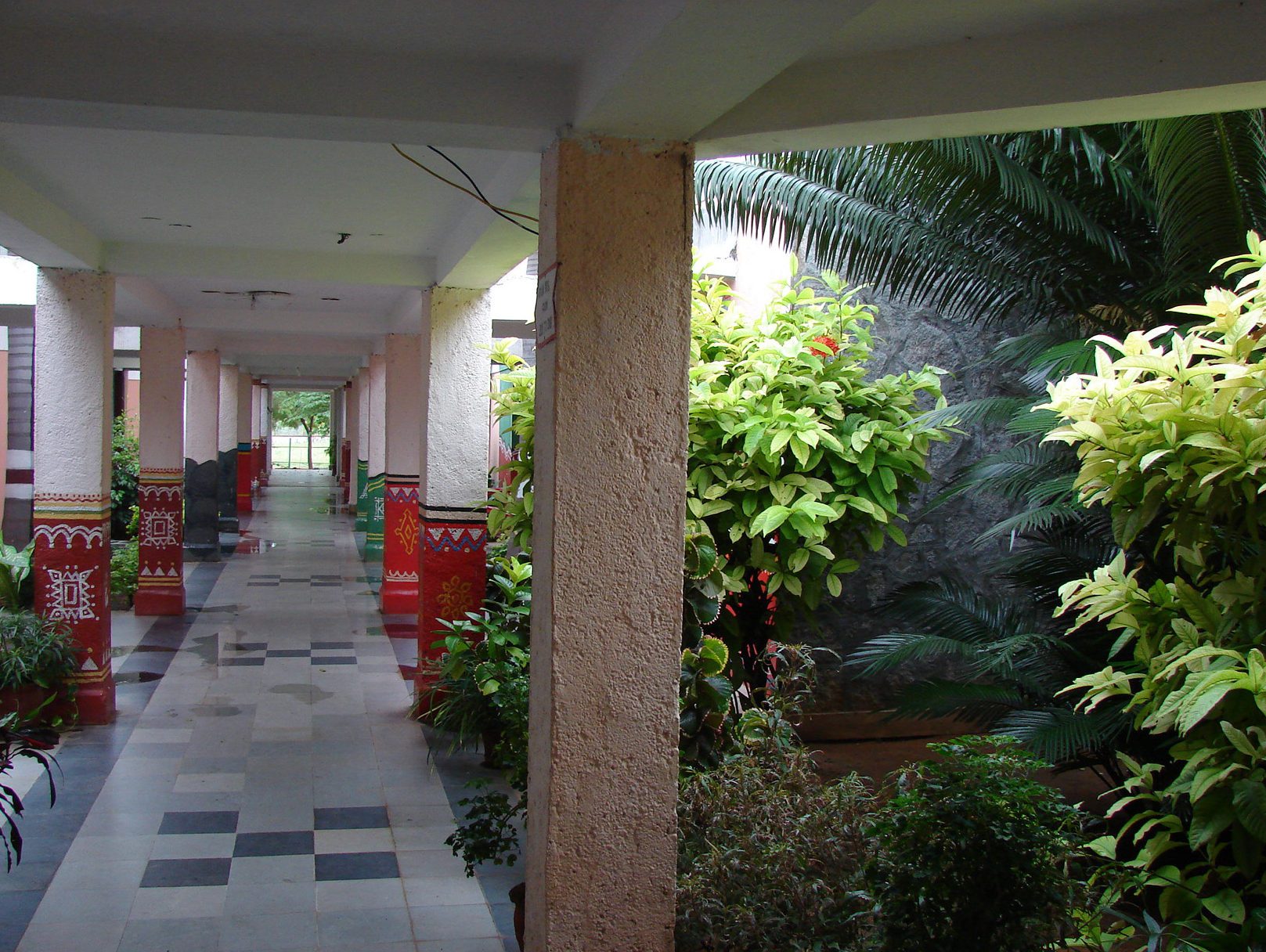
Besides the lovely photos of Hampi that hung on the walls, the rooms had some endearing artwork both outside and inside.
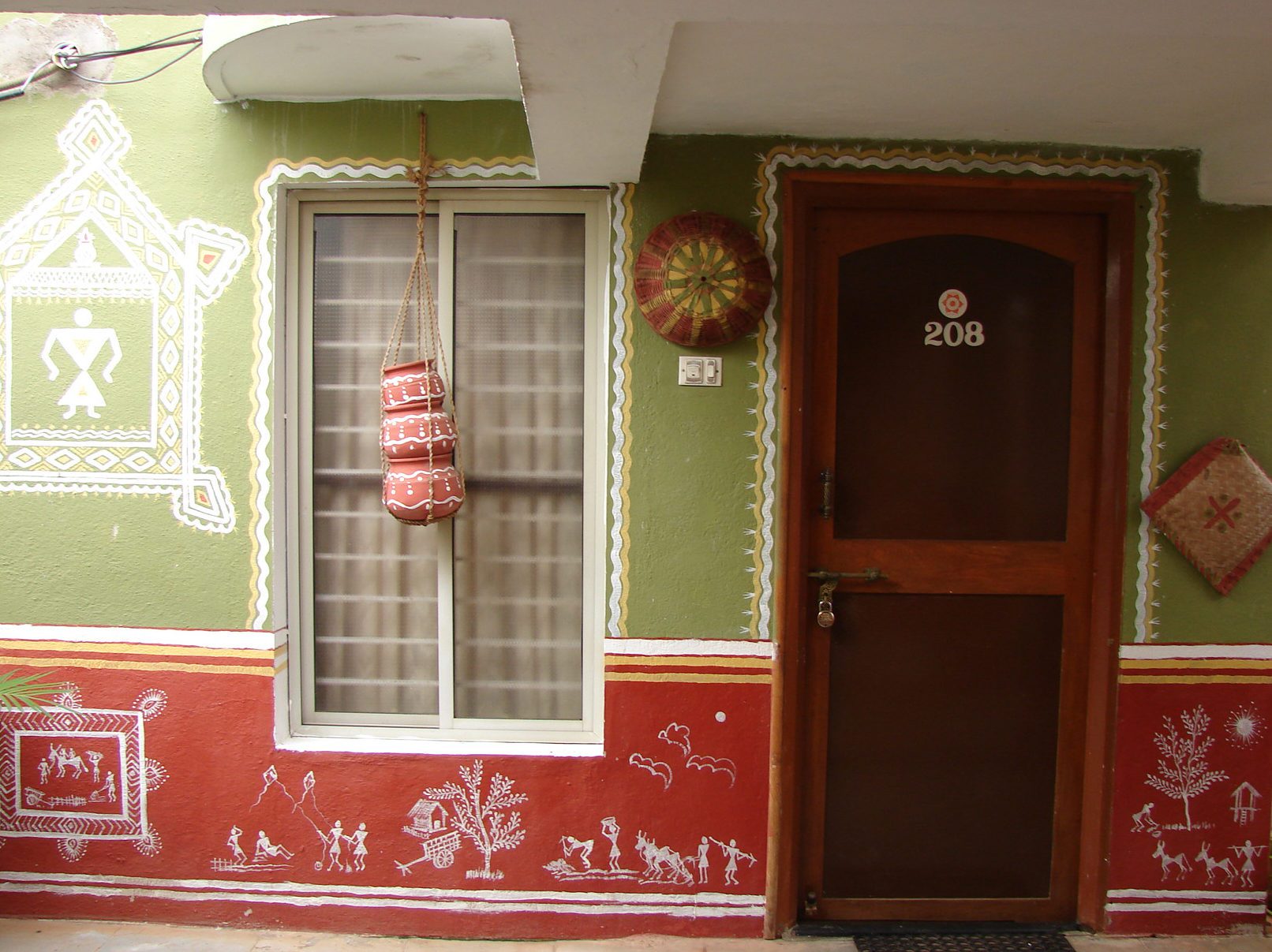
Before checking in, the manager told us that KSTDC was conducting a one day guided tour to all the major points. We thought, to get a better idea of the place, it would be better to go for it.
Ready for Hampi
By 10.30, we boarded the KSTDC bus and were on our way to Hampi bazaar to see one of the most important temples in Hampi, the Virupaksha temple.
Today, we decided to be tourists.
From whatever research we did on Hampi, we came to understand that there were more than 1000 protected monuments in and around Hampi. Hampi’s ruins are broadly divided into the sacred center (mainly the temples and mandapas) and the royal center (palaces, forts, gates etc). And to see them all in 3 days was no child’s play.
Virupaksha temple
Virupaksha temple, one of the oldest and main temples in Hampi, is an important pilgrimage centre for the worshippers of Lord Shiva.
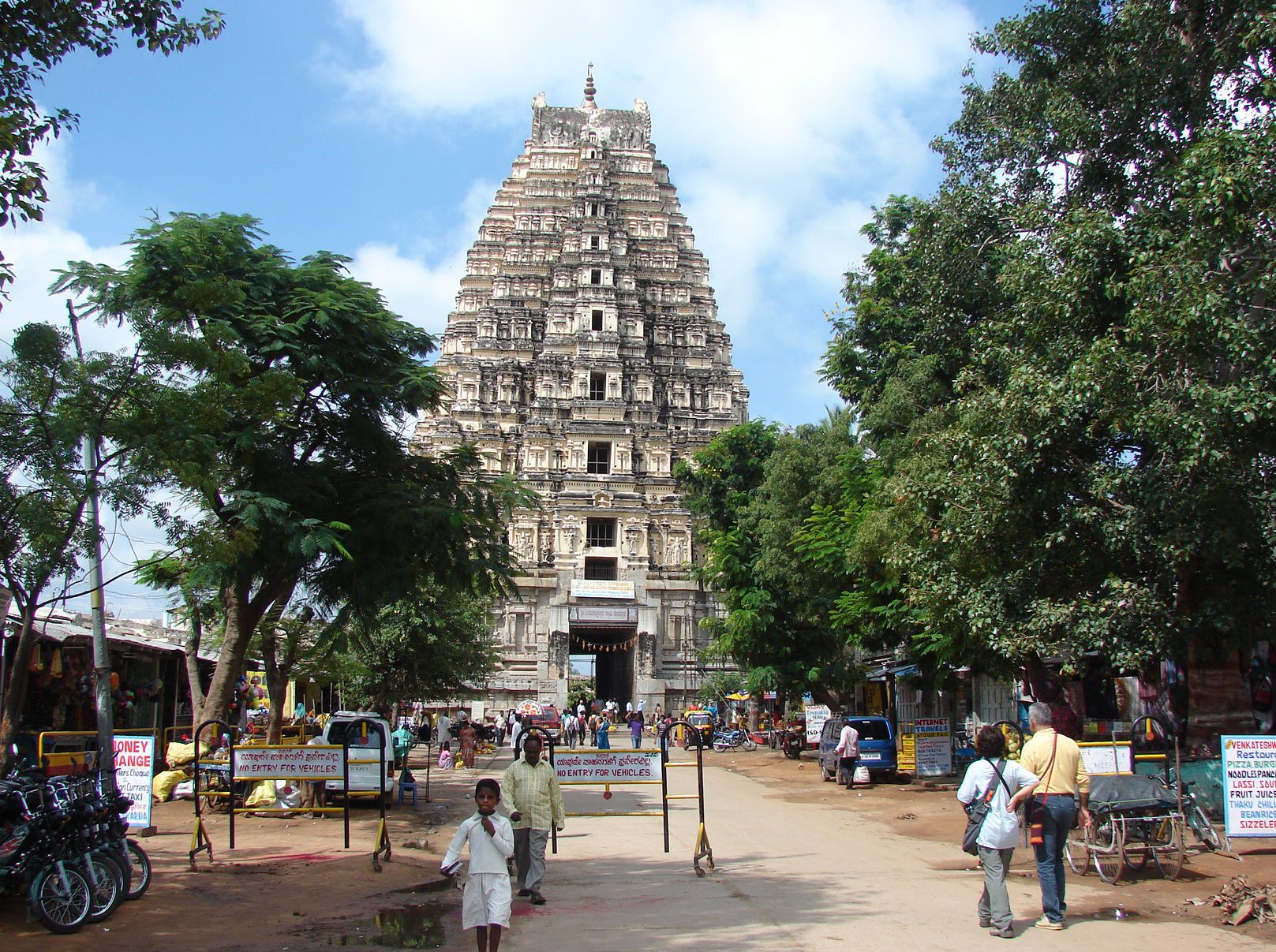
Located on the southern bank of Tungabhadra river, Virupaksha temple is said to be one of the oldest functioning temples in India.
What stands out is the entry point into the temple, a 9-storeyed eastern gopura which leads to the outer courtyard. There is another gopura on the northern side too. These gopuras are visible from almost anywhere in Hampi. Right from the open restaurants in the Hampi bazaar from where one can endlessly gaze at those magnificent towers to the Hemkuta hills from where one can watch the sunset right behind the temple.
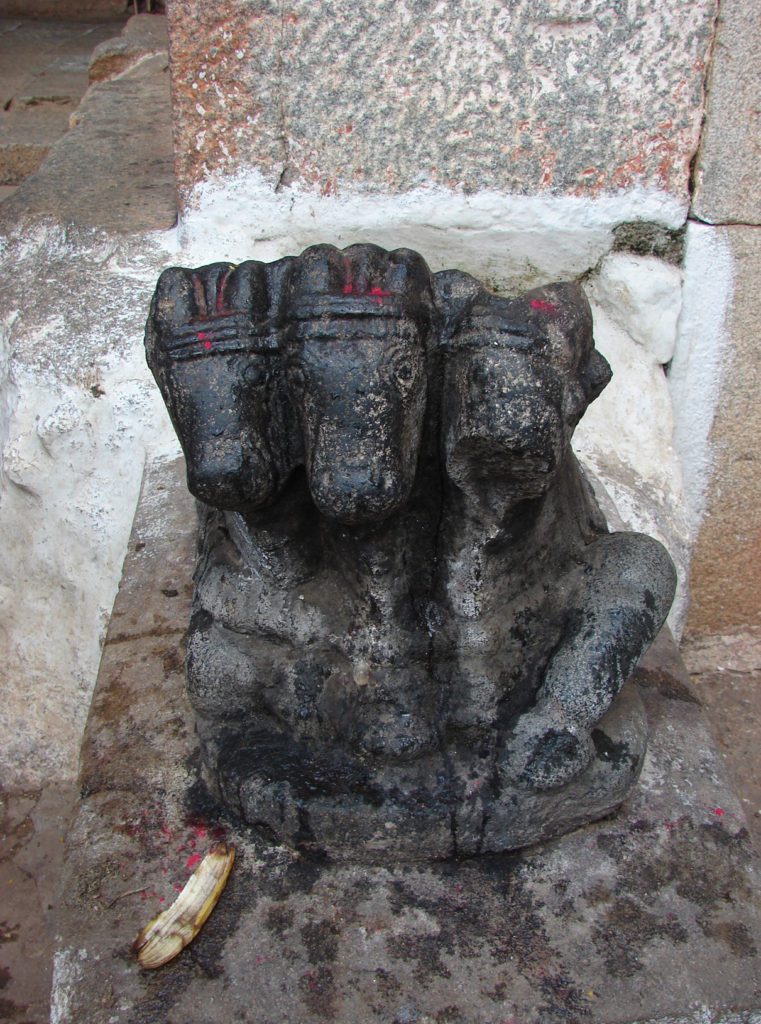
Upon entering the outer courtyard, on the left, a rare 3-headed Nandi is found. Other than the many small shrines present in the courtyard, the major structures found in the outer courtyard are the Phalapuja mandapas.
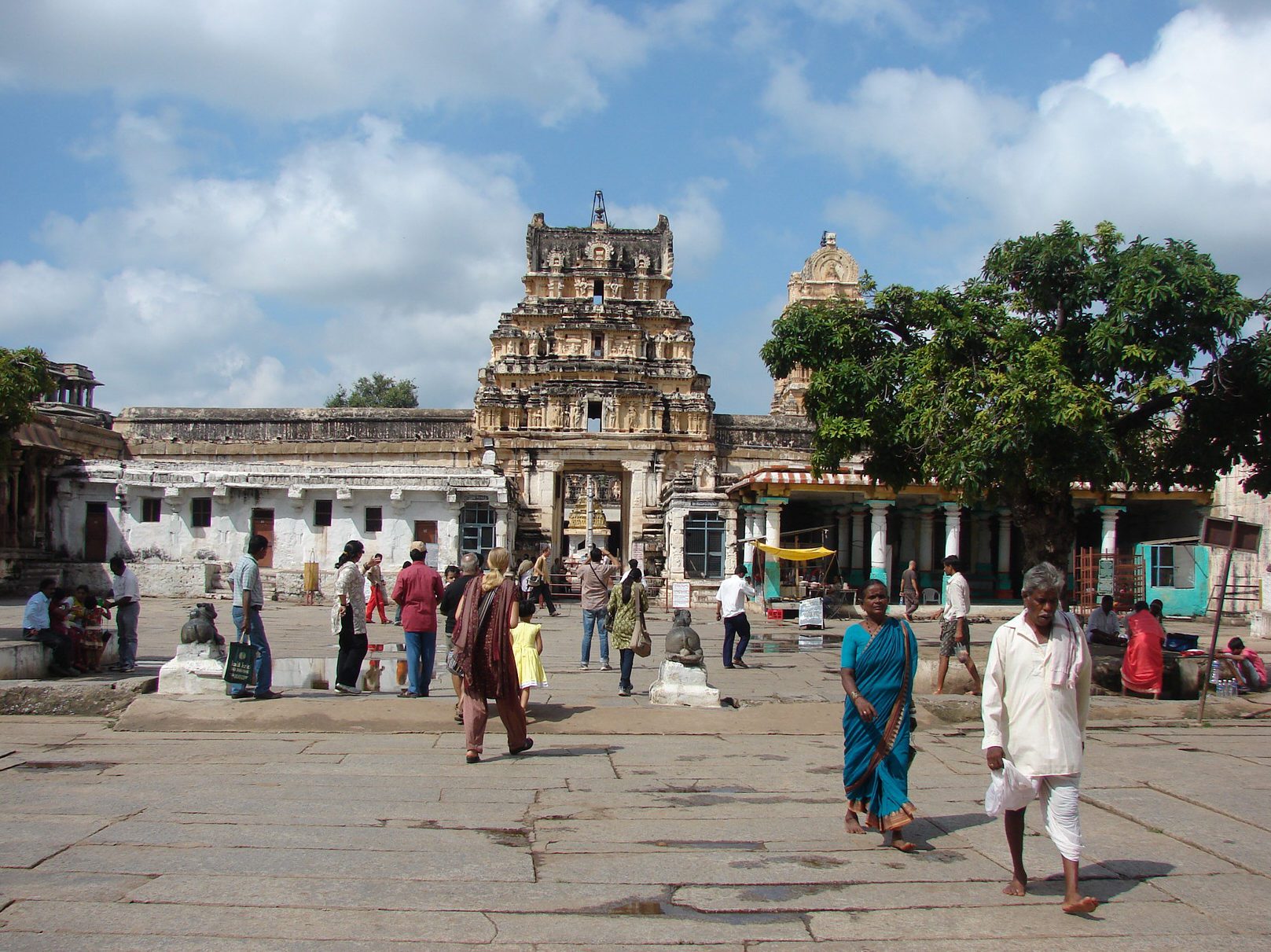
The outer courtyard is connected to the inner one by a small 3-storeyed gopura. The inner courtyard has pillars running on all the four sides with a rangamandapa in the centre. Behind the rangamandapa is the main shrine of Virupaksha.
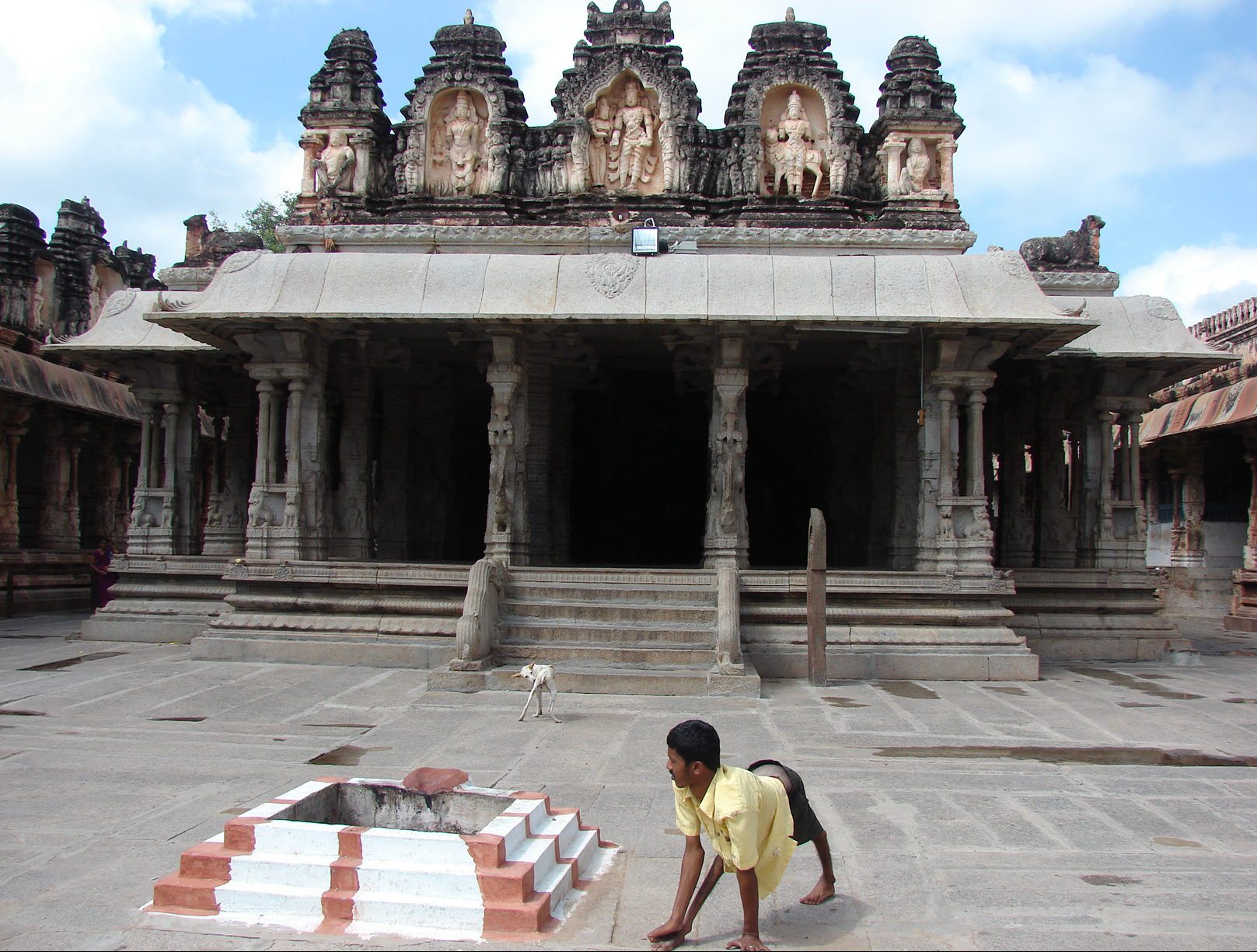
There are various sub-shrines around the inner court. On northern side near the gopura is a water tank called the Manmatha tank. Towards the back side of the temple is a small dark room where you get to see an inverted image of the main gopura, as light falls through a small slit on the wall.
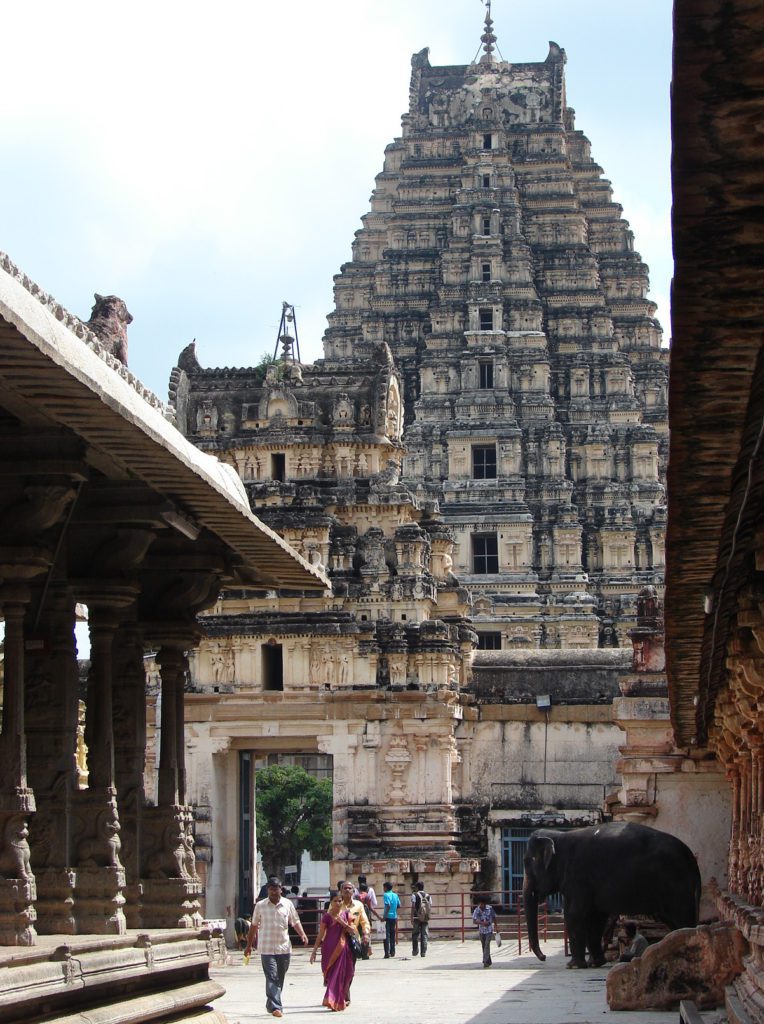
The temple has its own animal brigade. Right from Lakshmi, the temple elephant, which would eat bananas from your hand and bless you for a few rupees, to the monkeys hanging around the northern gopura eating rice from the plantain leaves offered by the devotees.
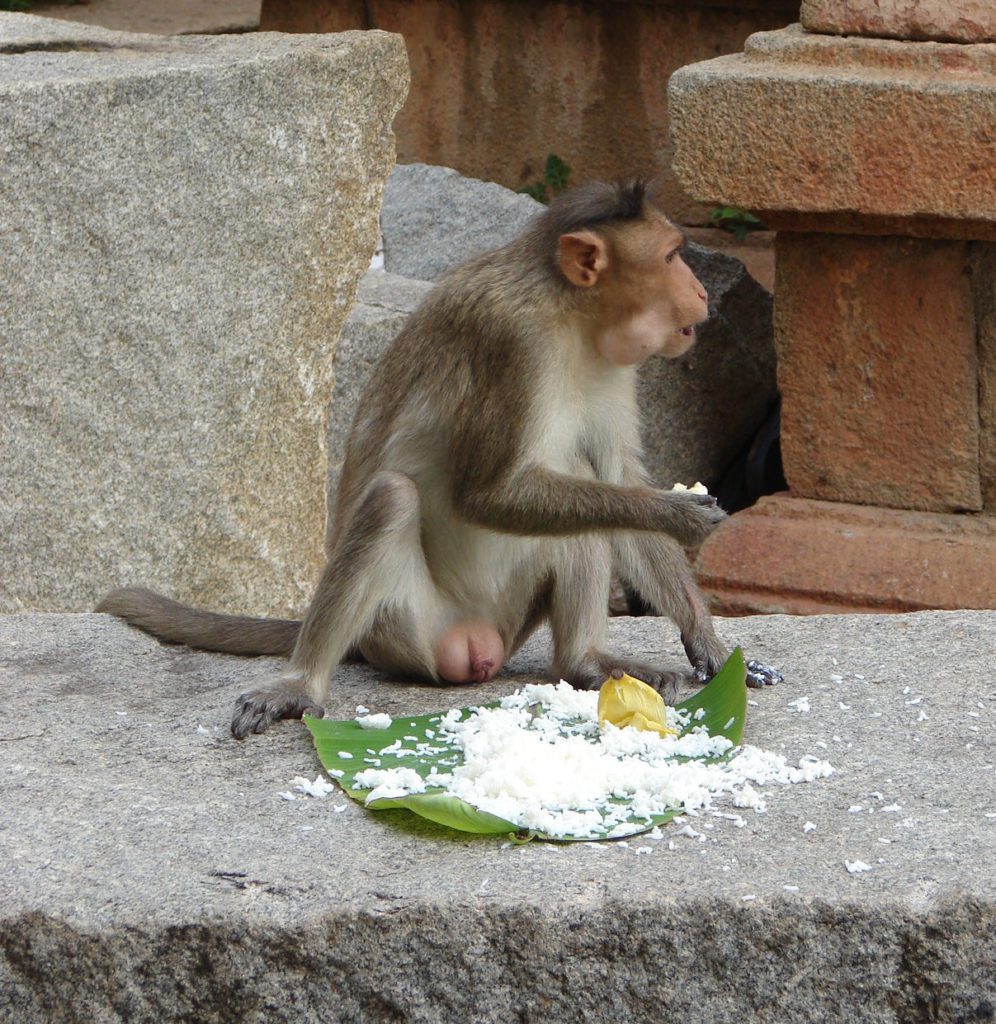
Hampi Bazaar
The street leading from the temple is called the Hampi Bazaar.
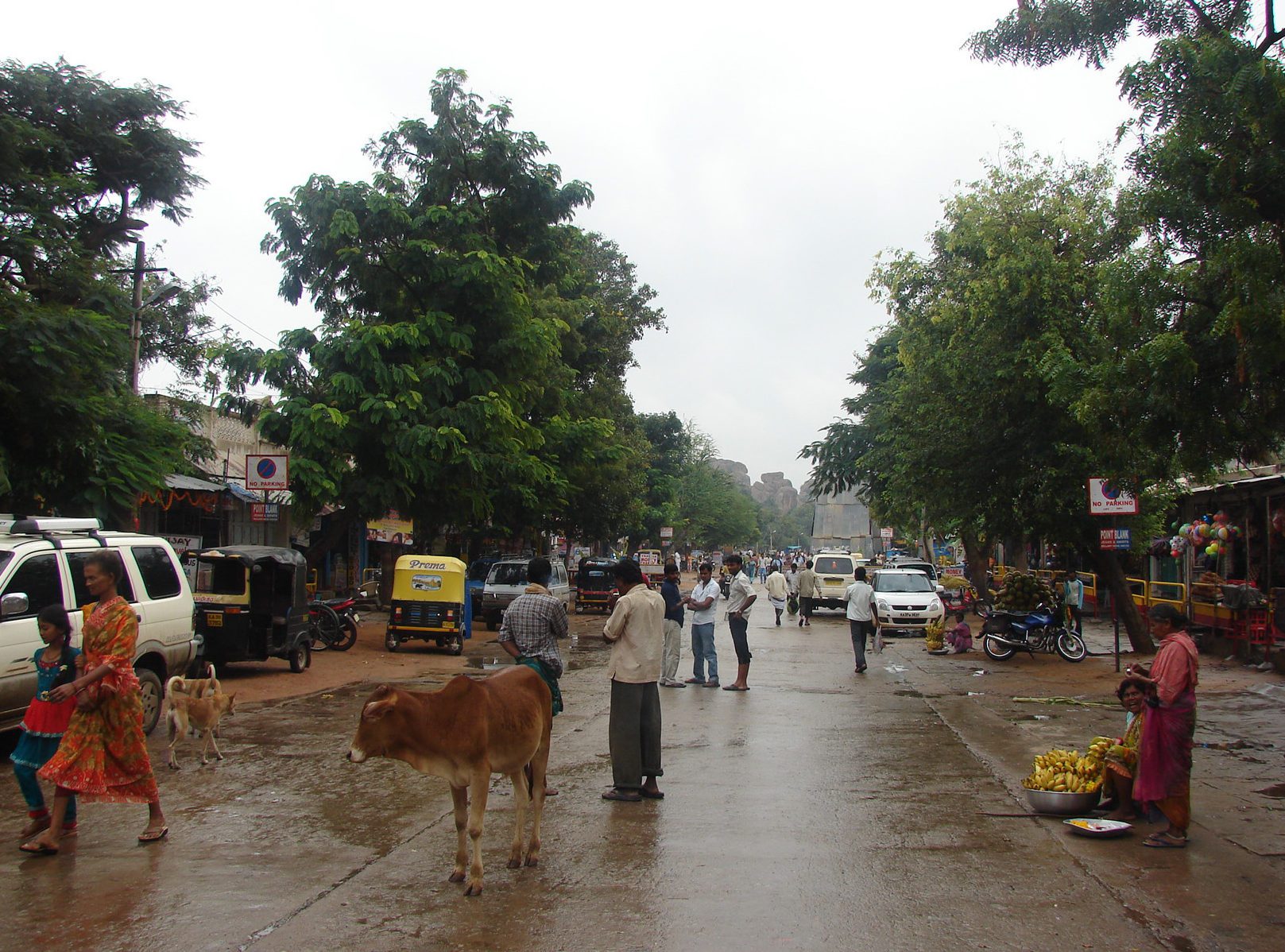
About a kilometre long, the bazaar is lined with a series of granite pavilions, some of them two-storeyed. These structures were once part of a thriving market.
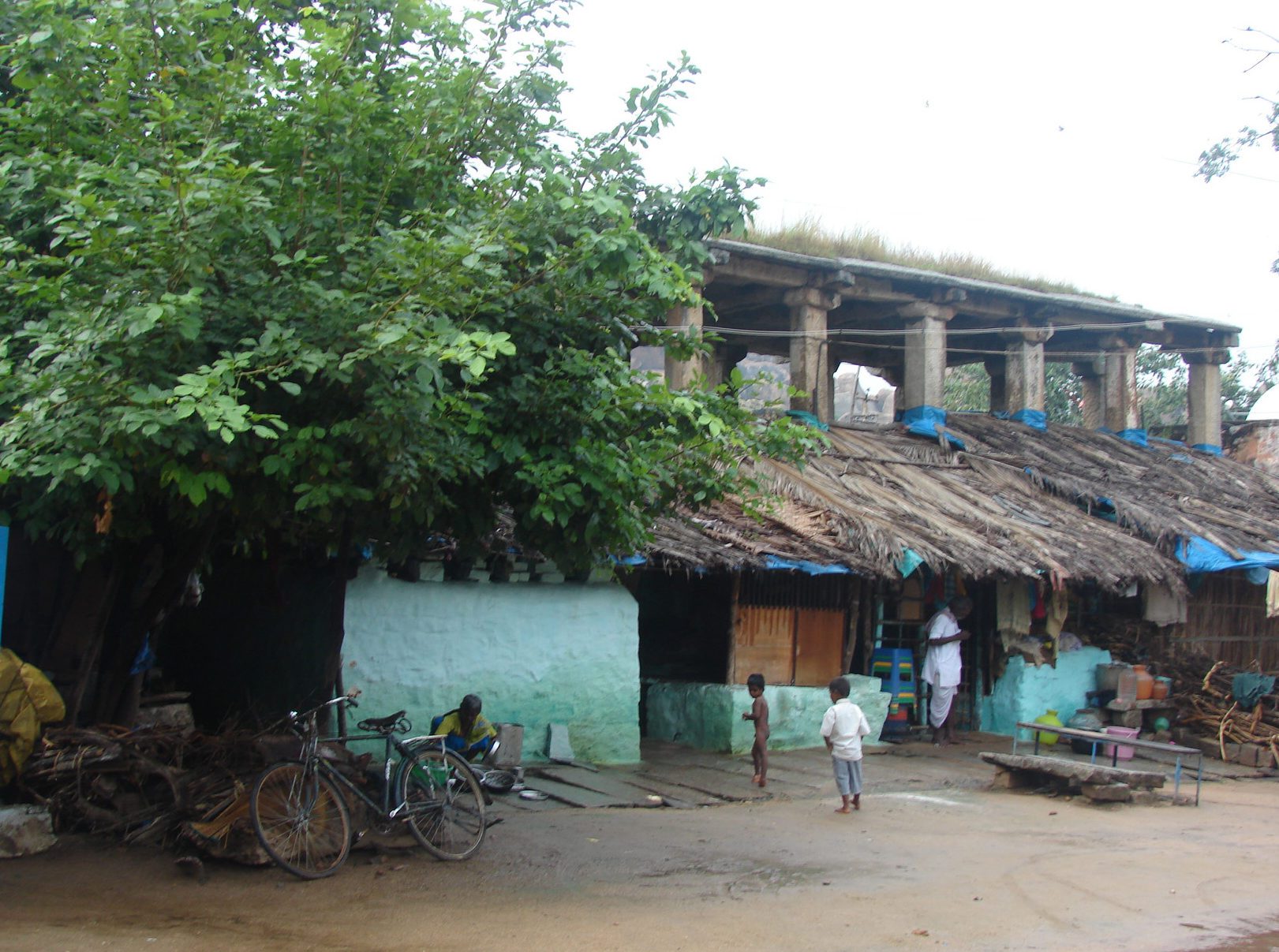
Most of these pavilions are encroached upon and made into shops, restaurants, homes, schools and even a police station. A lot of guest houses can be found around the Hampi Bazaar area, mainly catering to backpackers. The signboards in Hebrew, the Italian and German bakeries and the tie and dye clothes hanging from the shops give the Hampi bazaar a ‘Janpath look’.
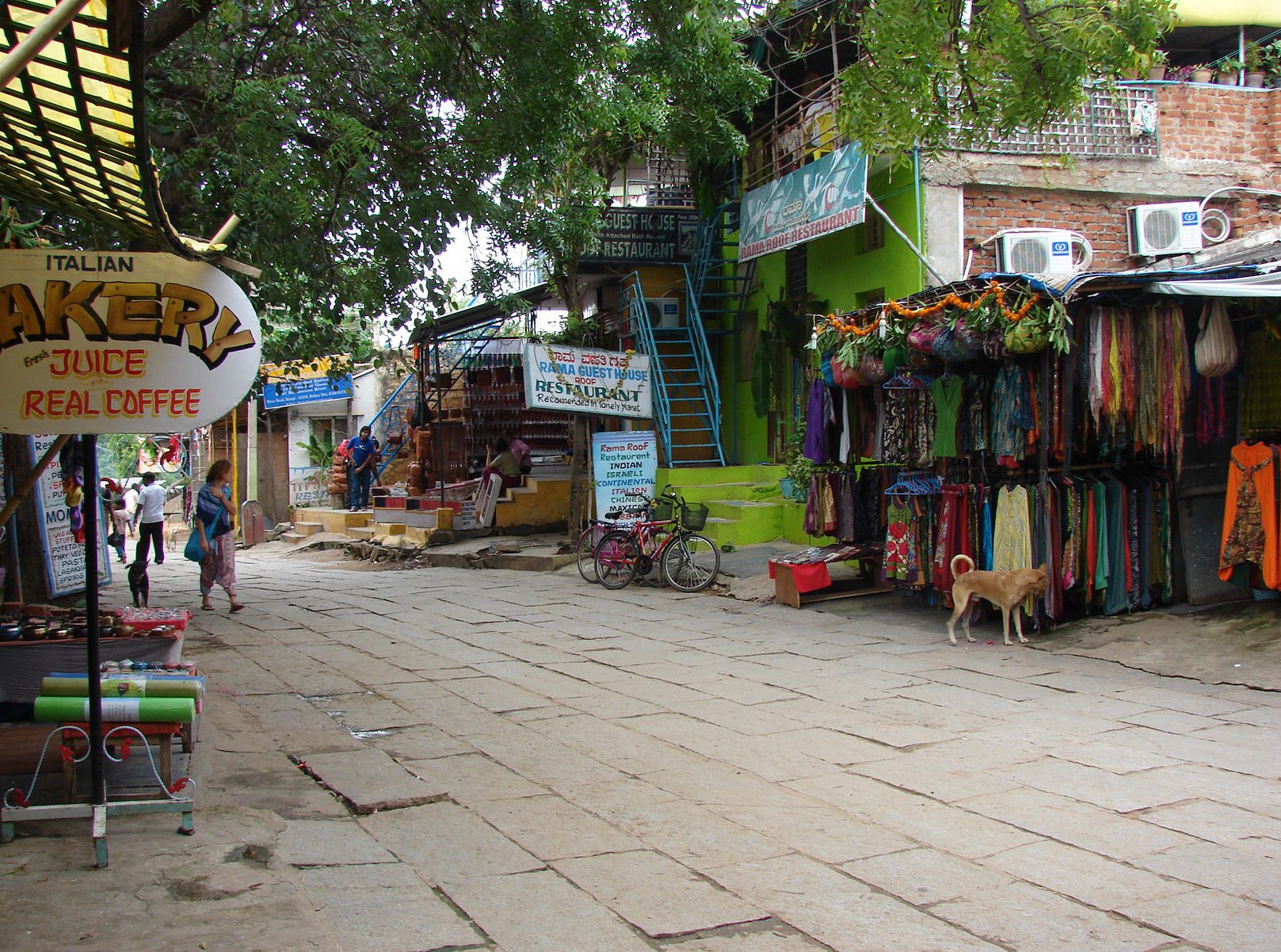
The shops sell everything and anything from ethnic clothes, bags, religious artefacts etc.

But in July, 2011, the district administration of Bellary, armed with a Karnataka High Court order, brought in three bulldozers to demolish the 20-year old bazaar. The entire stretch in front of the temple has now been razed to the ground, leaving hundreds of people with no means of livelihood.
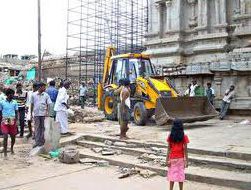
Hemakuta Hill temples
We took the road from the Hampi bazaar that climbs steeply up towards Hemakuta hill.
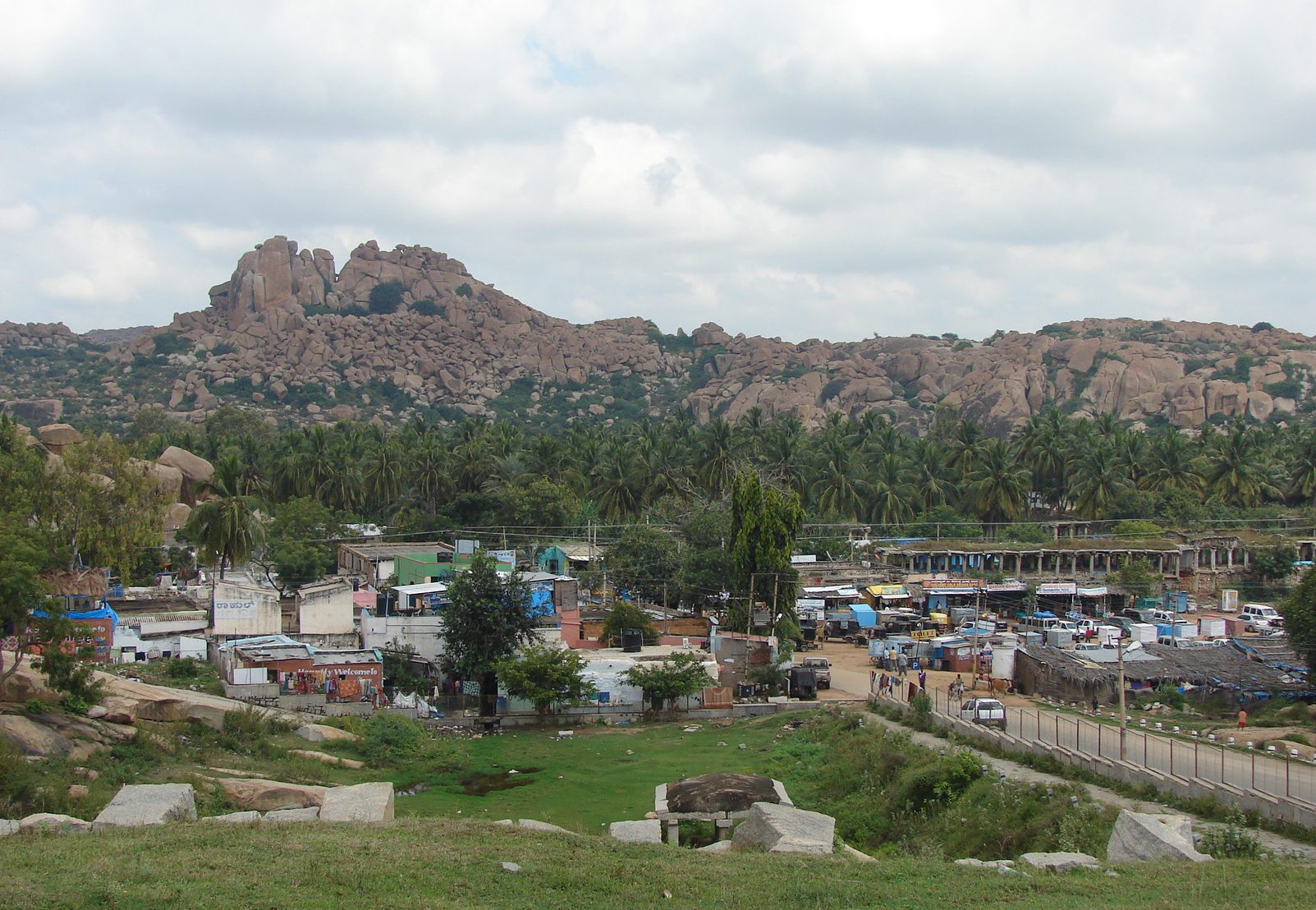
The next stop was the Kadlekalu Ganesha temple on the Hemakuta hill.
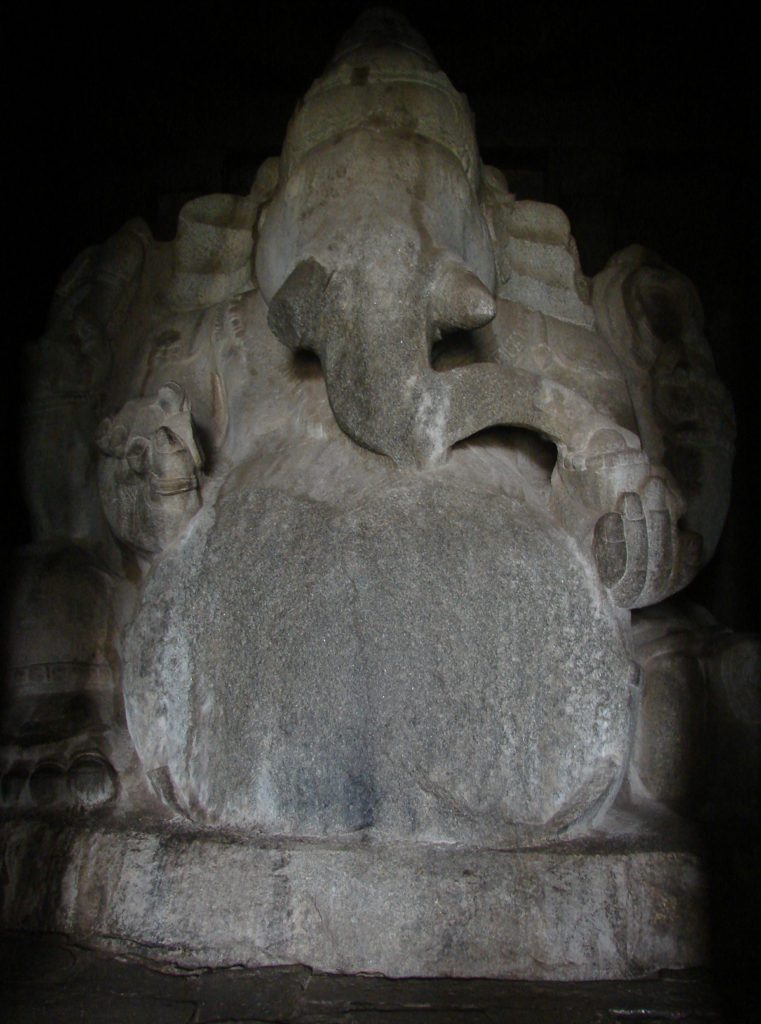
Here Ganesha is seen with his paunch shaped like a green gram seed, though it looked far more bigger than a green gram seed.
Right next to the Ganesha temple is a Krishna temple devoted to Balakrishna. The idol of Balakrishna now lies in a museum in Chennai.
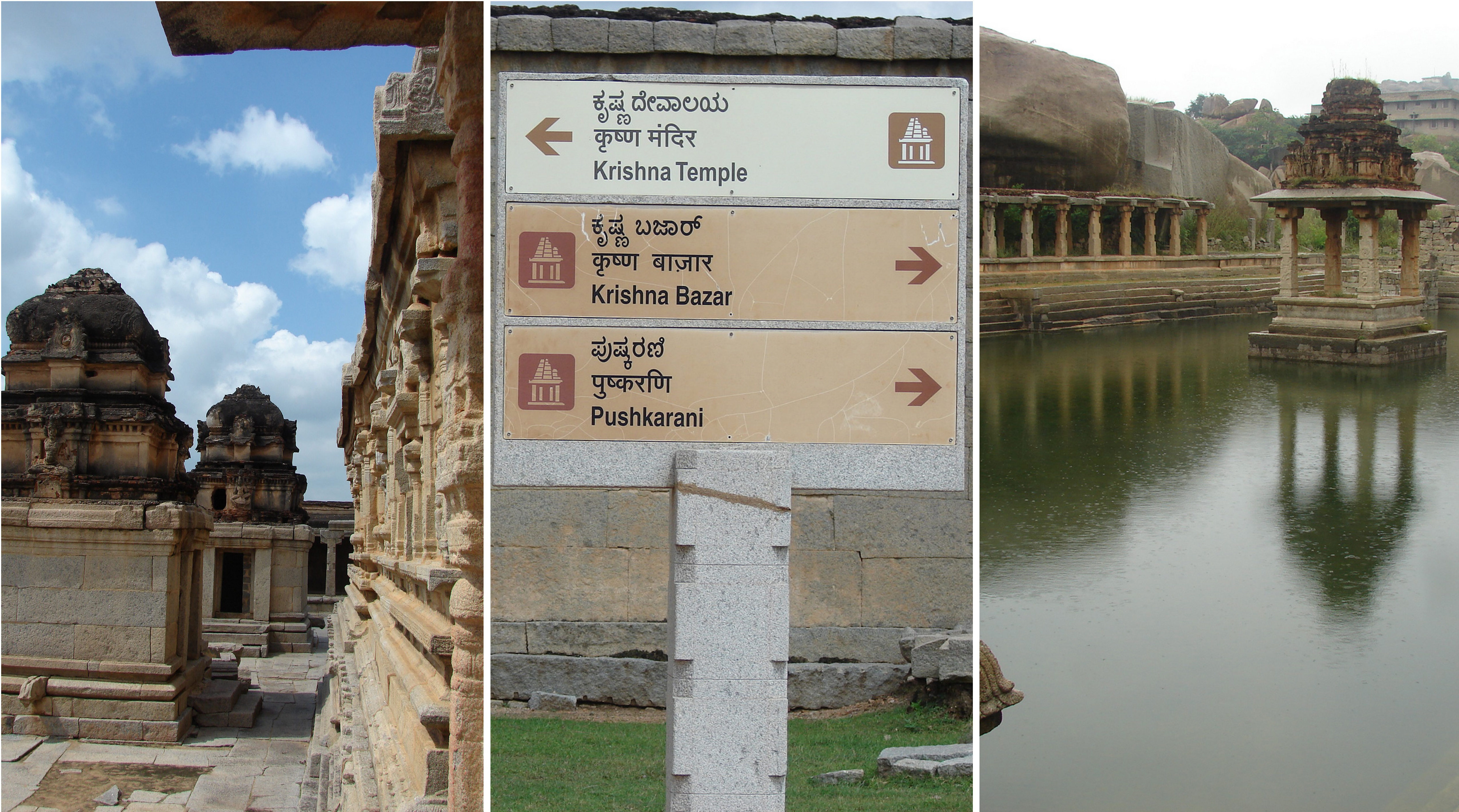
On the other side of the road are a bazaar and a pushkarini (water tank).
Lakshmi Narasimha
Further down is the statue of Lakshmi Narasimha. This giant monolithic statue of the man-lion god is the largest icon in Hampi. Narasimha is depicted in a cross-legged seated position. The original structure had his consort Lakshmi sitting on his lap.
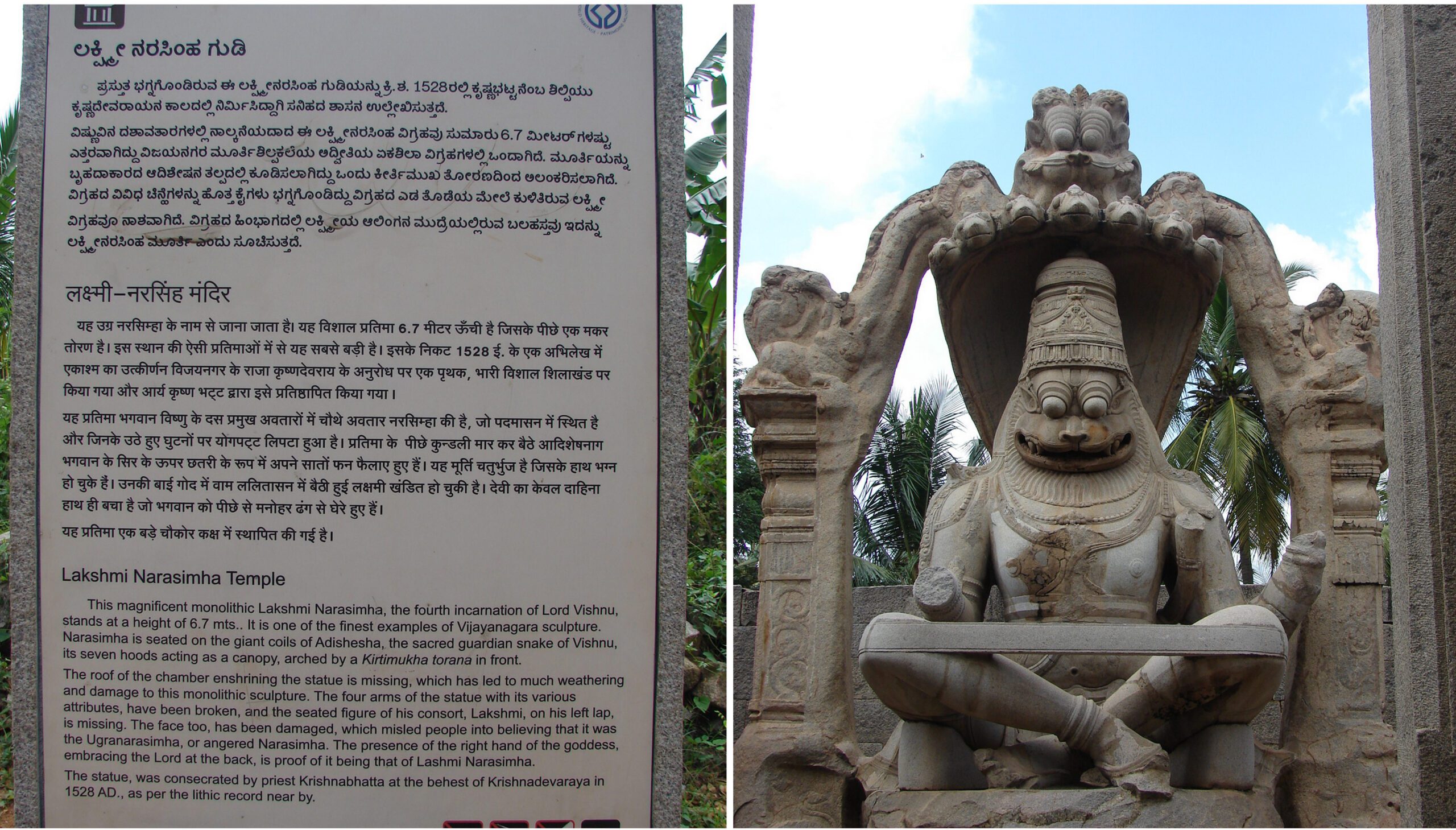
This image was destroyed during the enemy invasion. Currently, only a hand of the goddess resting on his waist can be seen.
Badavalinga shrine
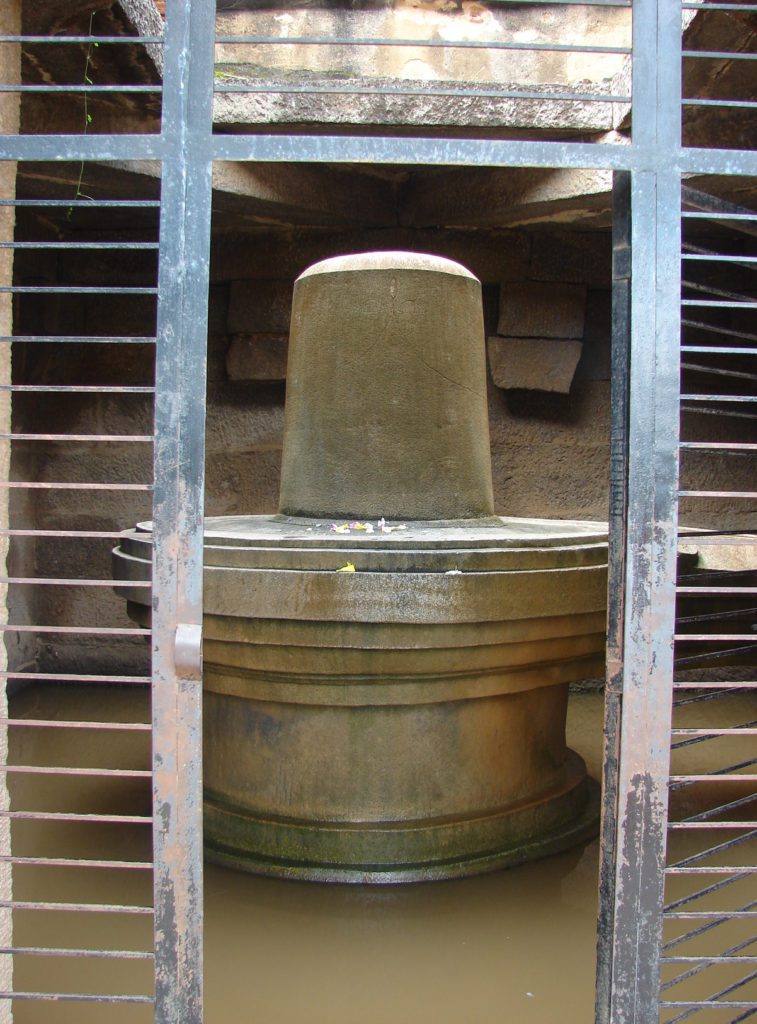
Next to the Lakshmi Narasimha is a Badavalinga shrine which was said to be built by a poor woman. The pedestal always remains immersed in water.
Akki Tangi Gundu
A few meters ahead on the road is the Akki Tangi Gundu better known as sister stones.
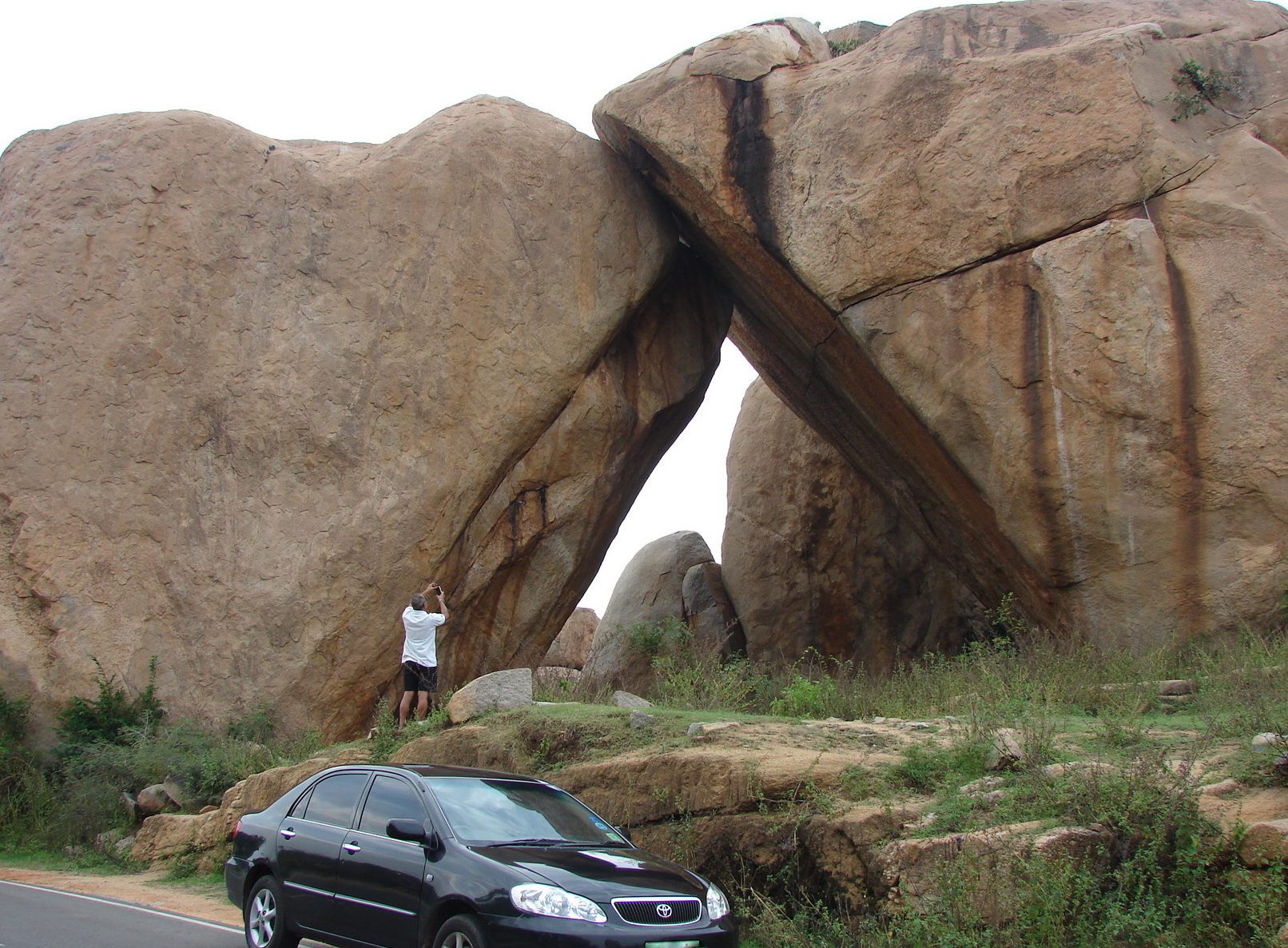
Two huge stones stand precariously leaning into each other. The story is that two sisters came to visit Hampi and were cursed into stones as they ridiculed the place. The sister stones were recently in the news because a portion collapsed.
Underground Shiva temple
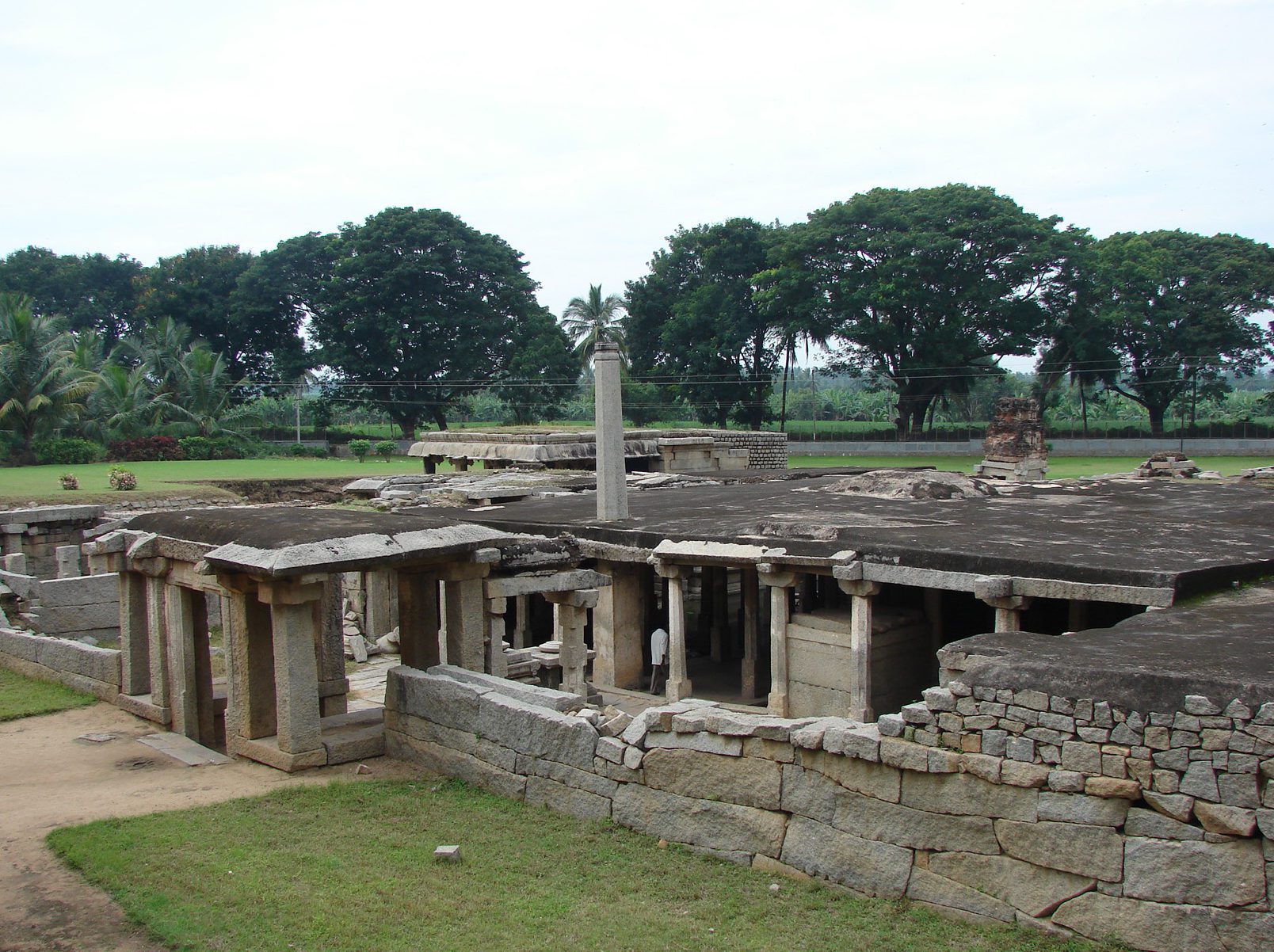
Our next stop was the underground Shiva temple. As the name suggests, the temple is below ground level. The structure is in a dilapidated state and the main sanctum is under water.
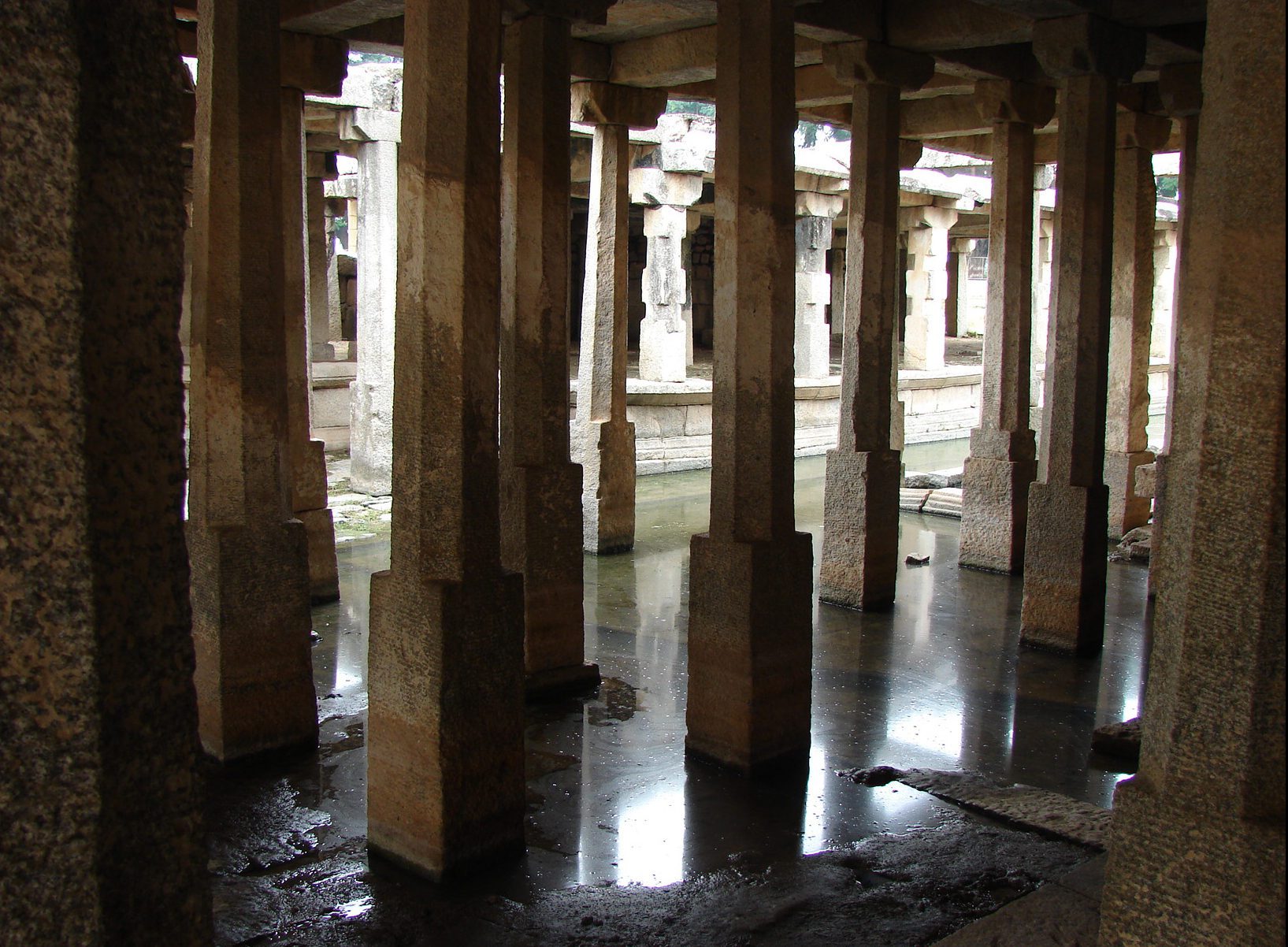
Zenana enclosure
We moved on to the Zenana enclosure next. This used to be the ladies’ quarters. The enclosure has a huge wall running along the four sides.
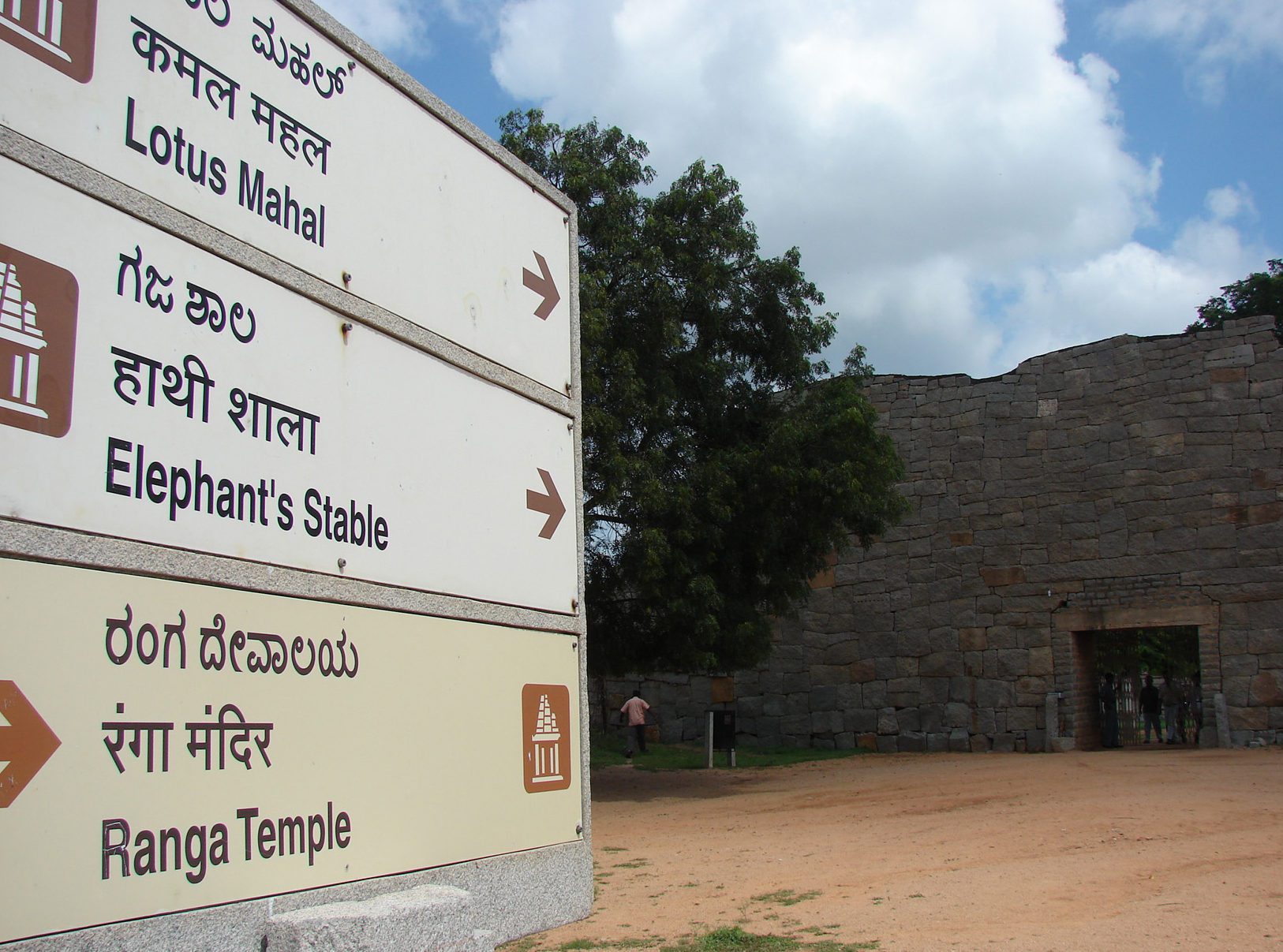
There are three watchtowers and remnants of the Queen’s palace inside the enclosure.
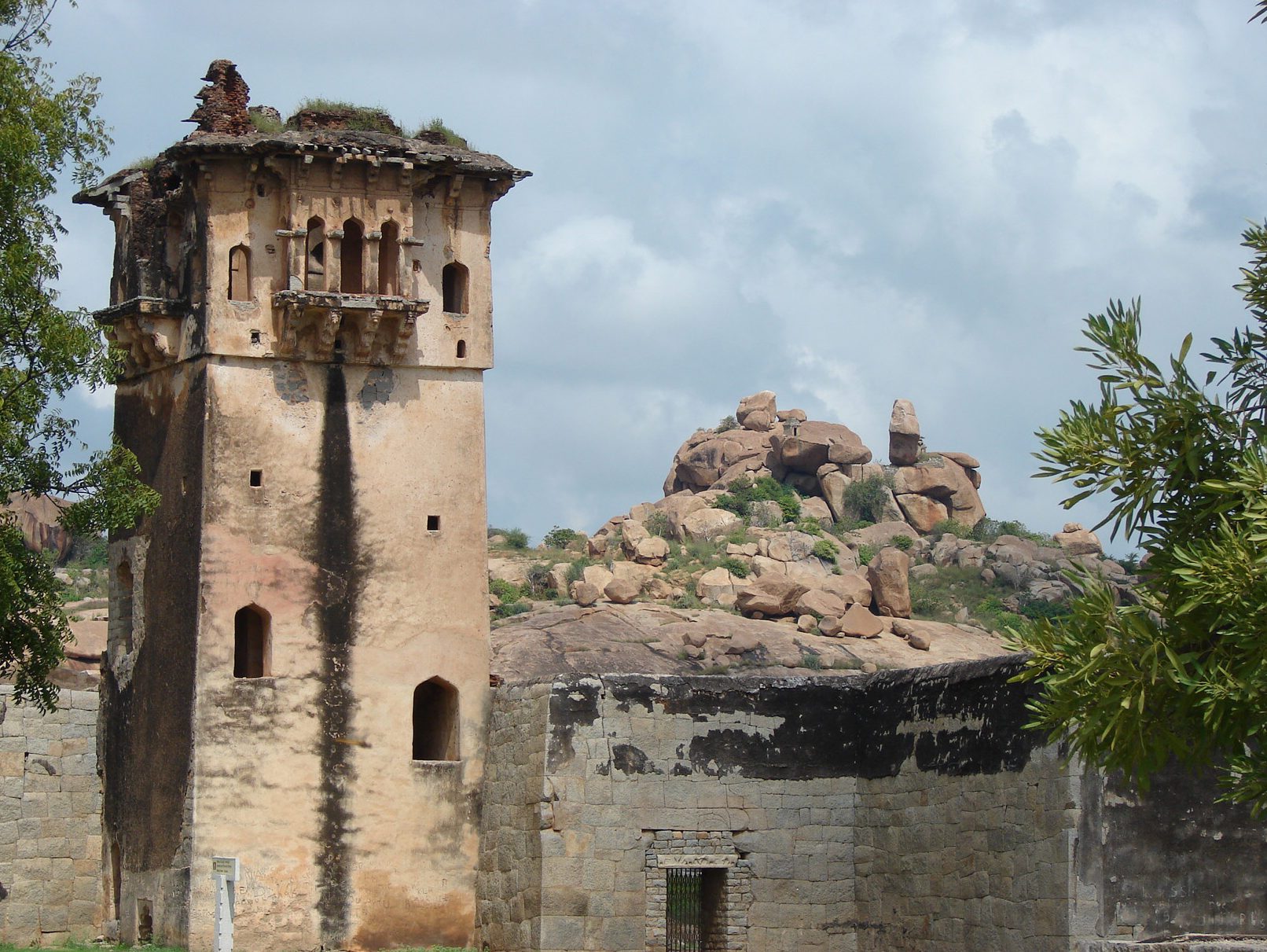
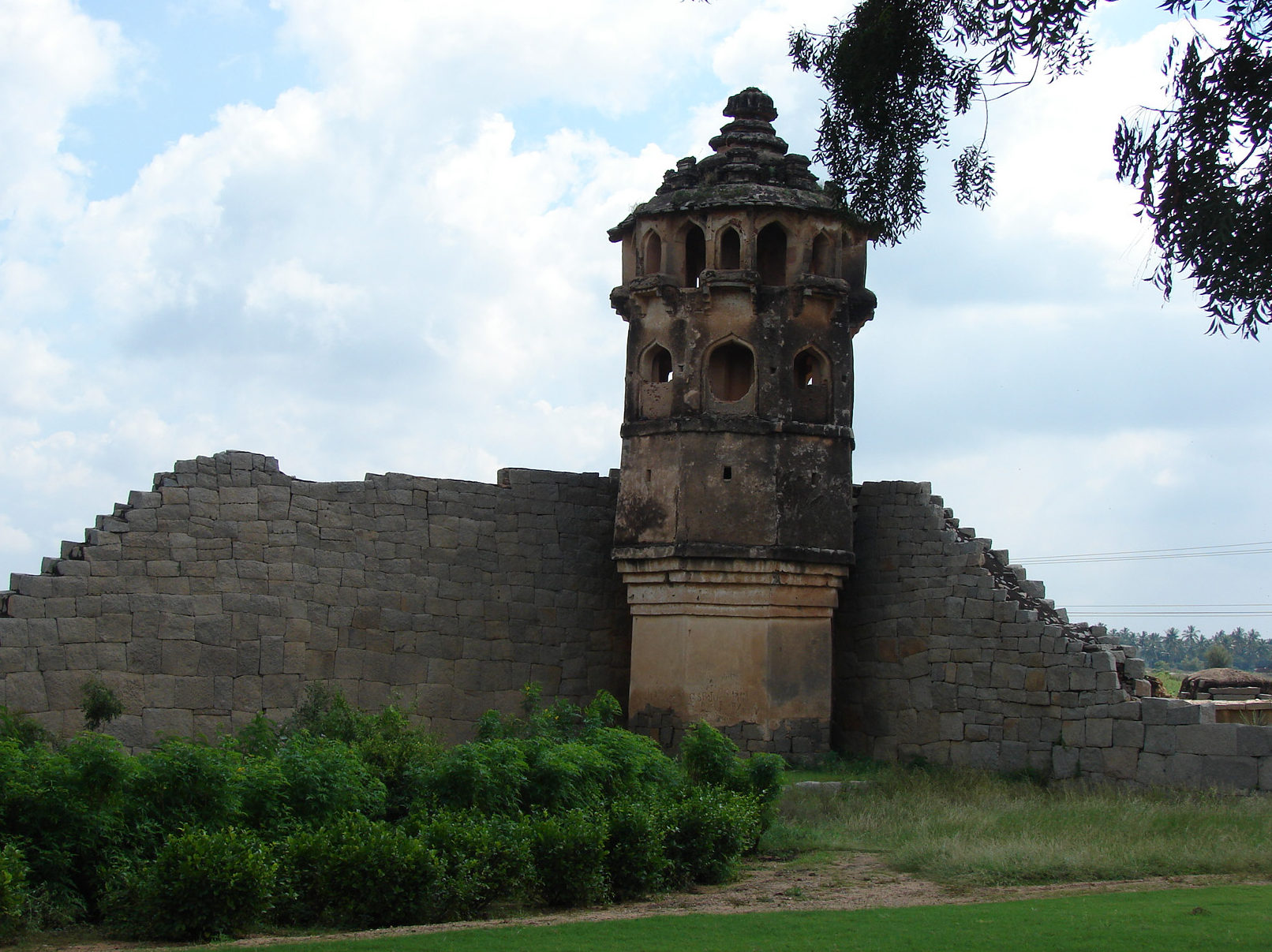
Lotus Mahal
But what stood out was the Lotus Mahal.
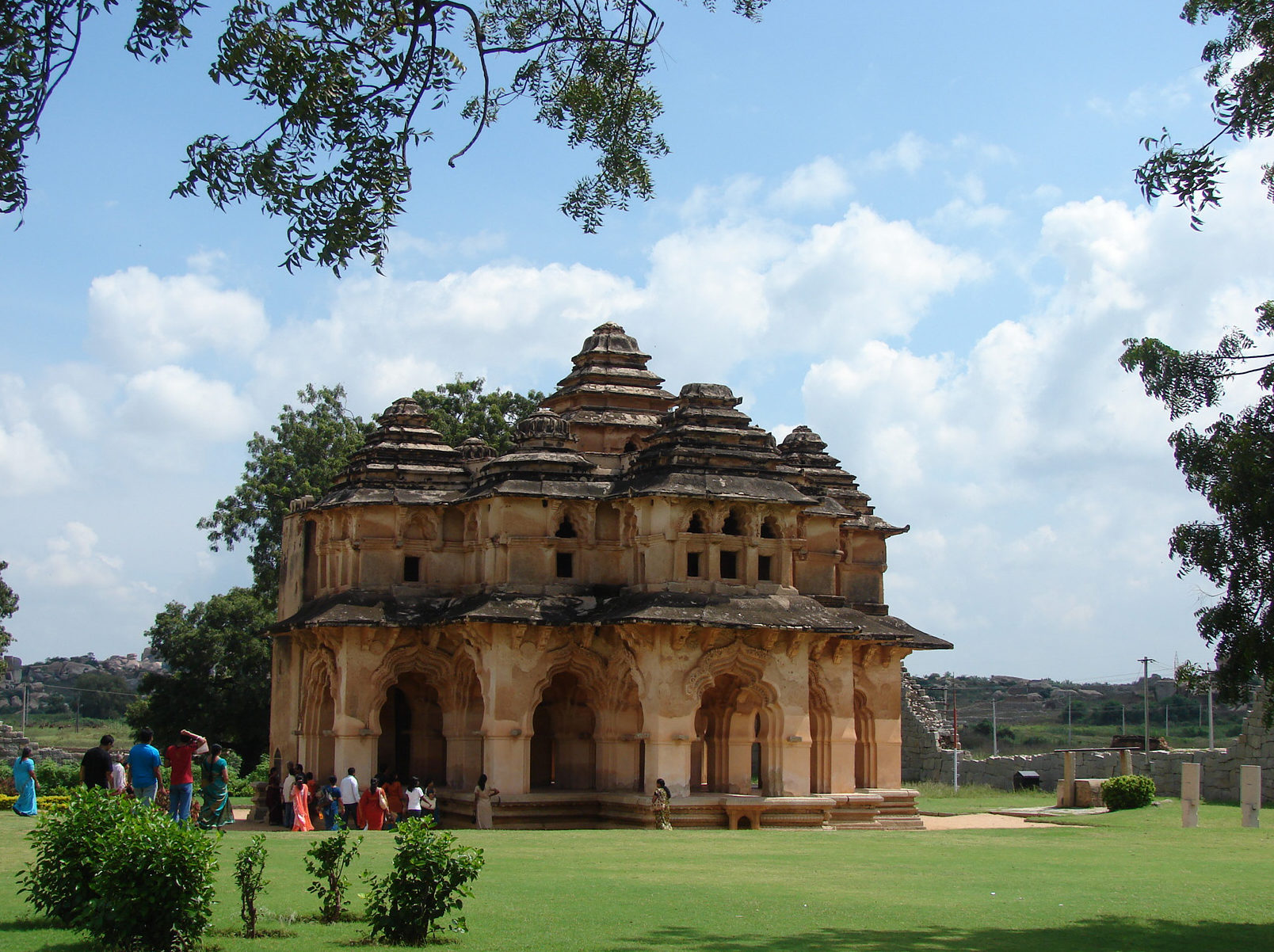
The Lotus Mahal stands on a raised platform and has two storeys. The first level has huge arches and pillars to support them and the level above has a lot of windows on all the sides.
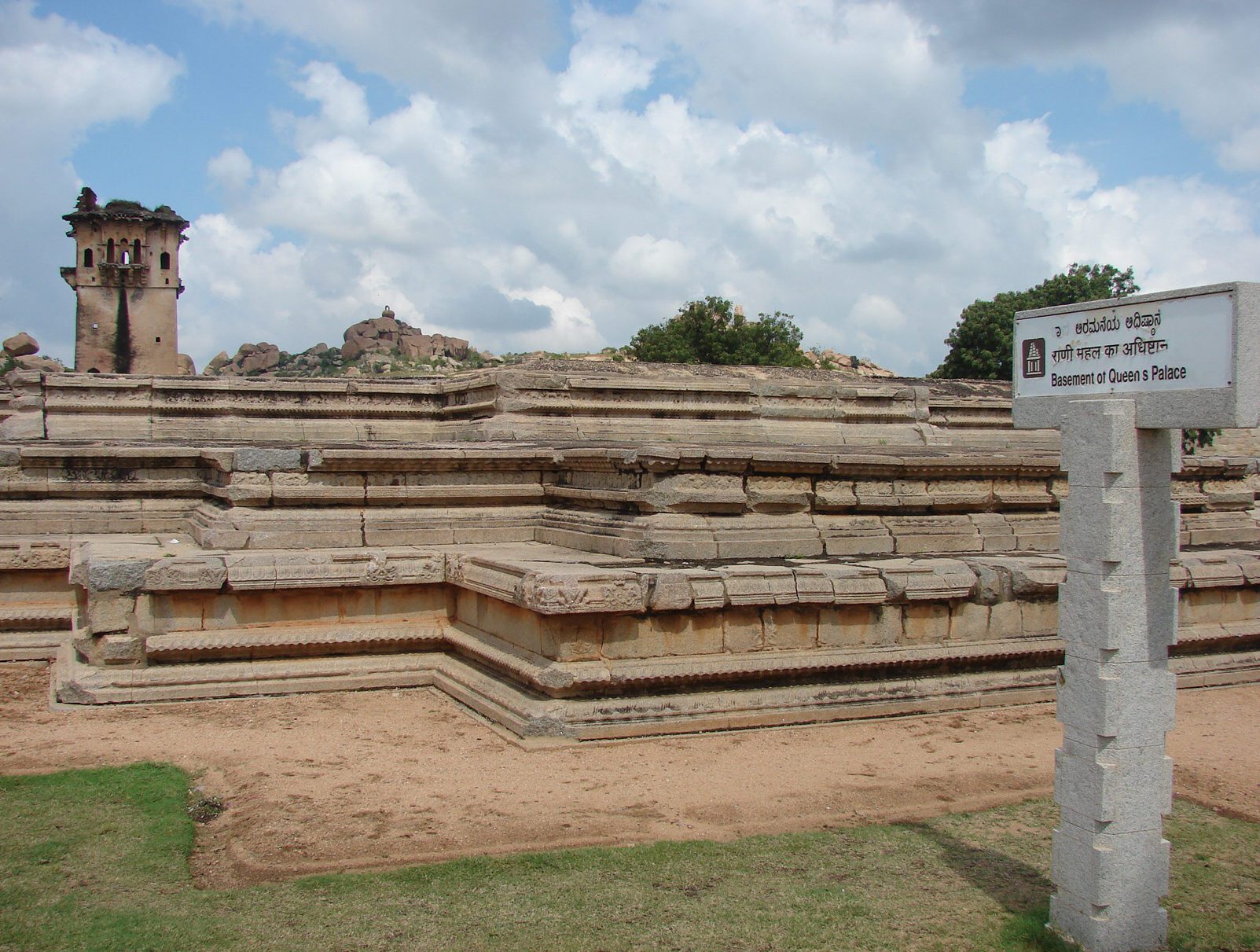
Elephant stable and guard quarter
Just outside the Zenana enclosure is a long oblong building with huge domes on top – the elephant stable. There are hooks attached to the inside of the dome probably used to tie the elephants.

Close to the elephants stable is the Guard Room, which has arched entrances.
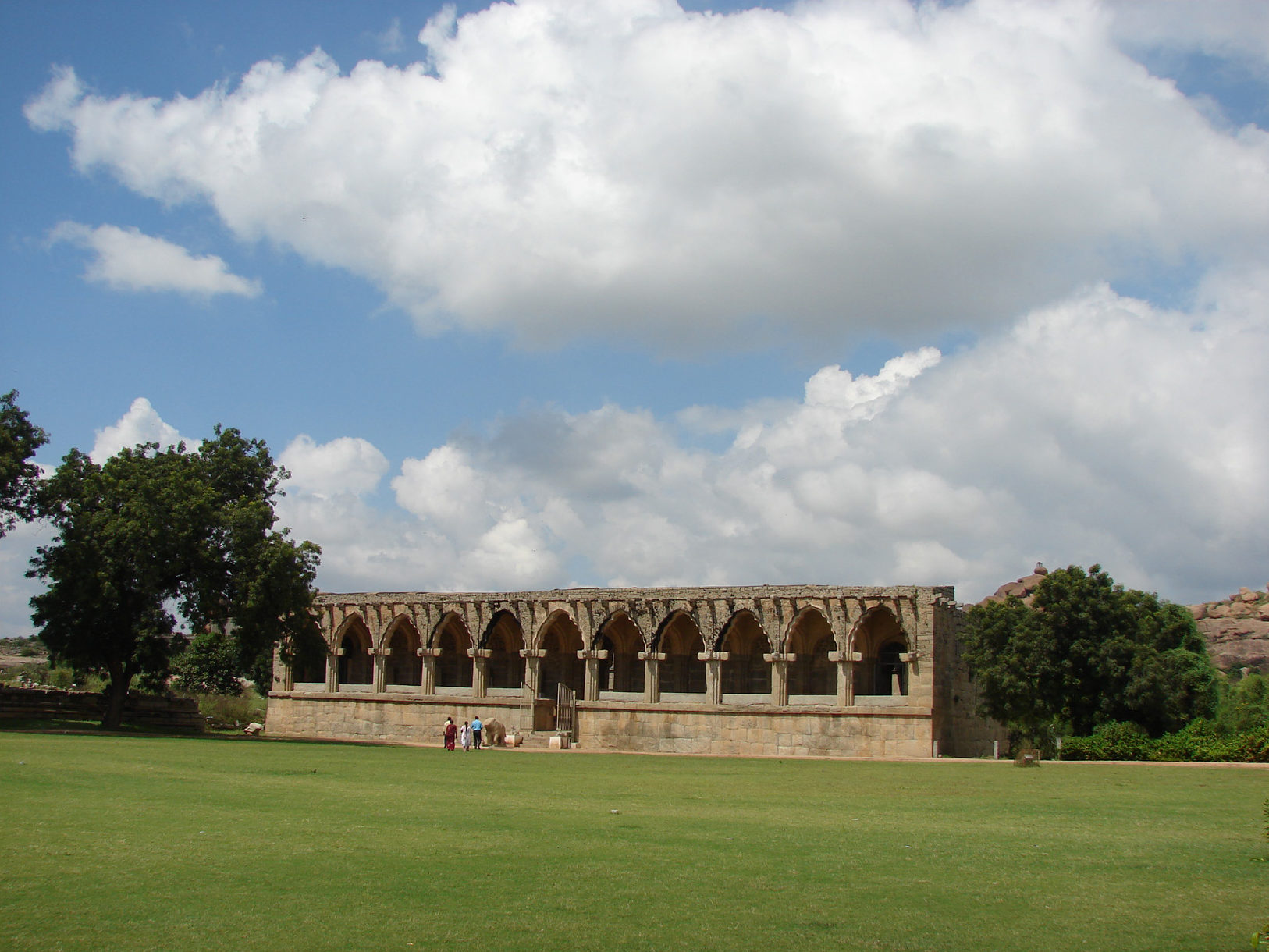
Hazara Rama temple
We next visited the Hazara Rama temple.
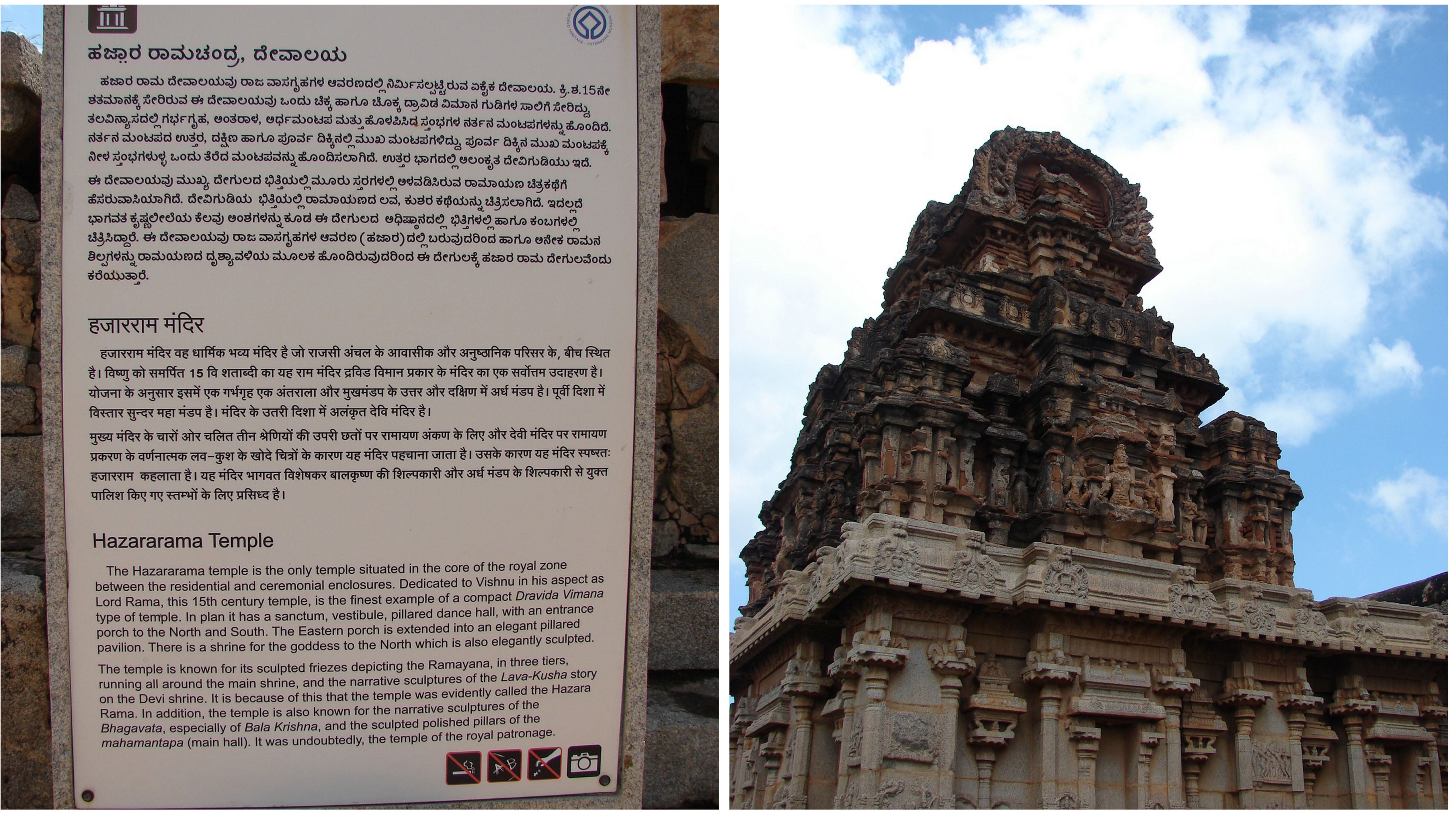
On the inner and outer walls are depicted the main incidents from Ramayana and a few scenes from Mahabharata.
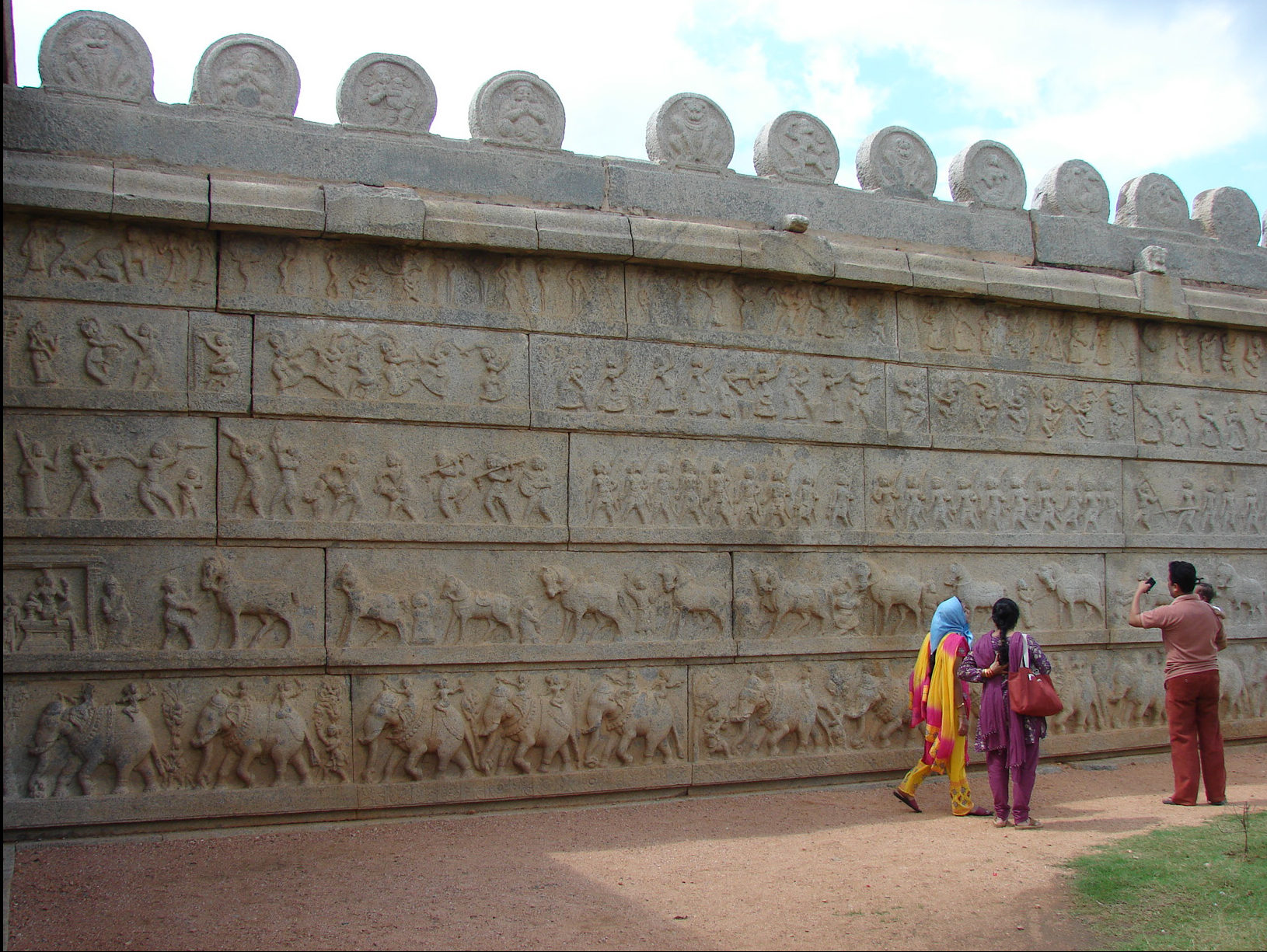
Mahanavami Dibba
We walked ahead to the King’s palace which encloses the King’s audience hall, a large water tank and a huge pedestal structure called the Mahanavami Dibba. The King’s audience hall must have been a huge pillared structure in its prime. But now what remains is a platform with a lot of vestiges of pillar-sockets.
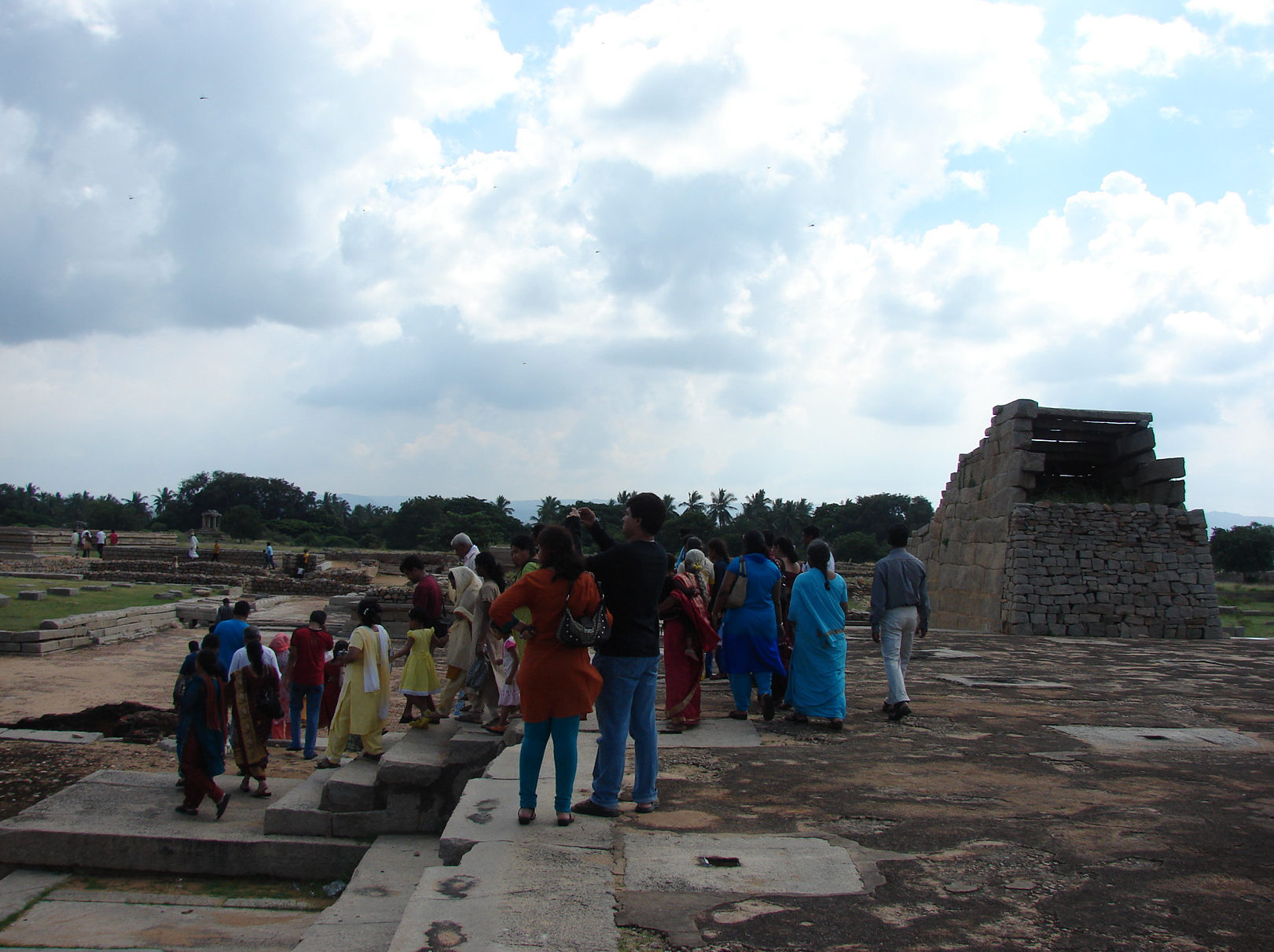
The Mahanavami Dibba was erected after Krishnadevaraya’s victorious campaigns in Orissa.
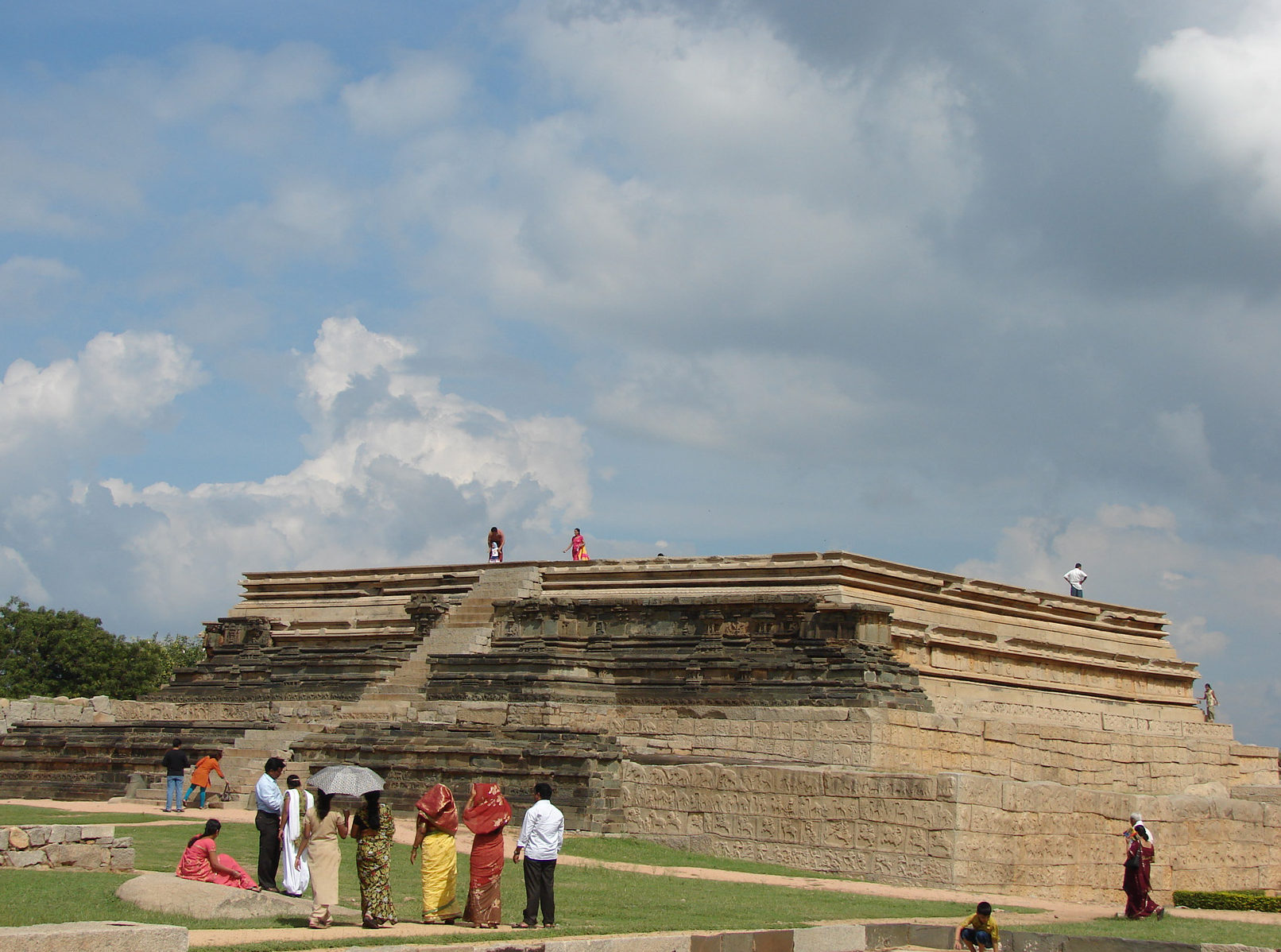
Ever since it has played a prominent place in the Navarathri celebrations.

At the base of the Mahanavami Dibba is a water tank with steps on all sides. There are inlets and outlets around the tank.
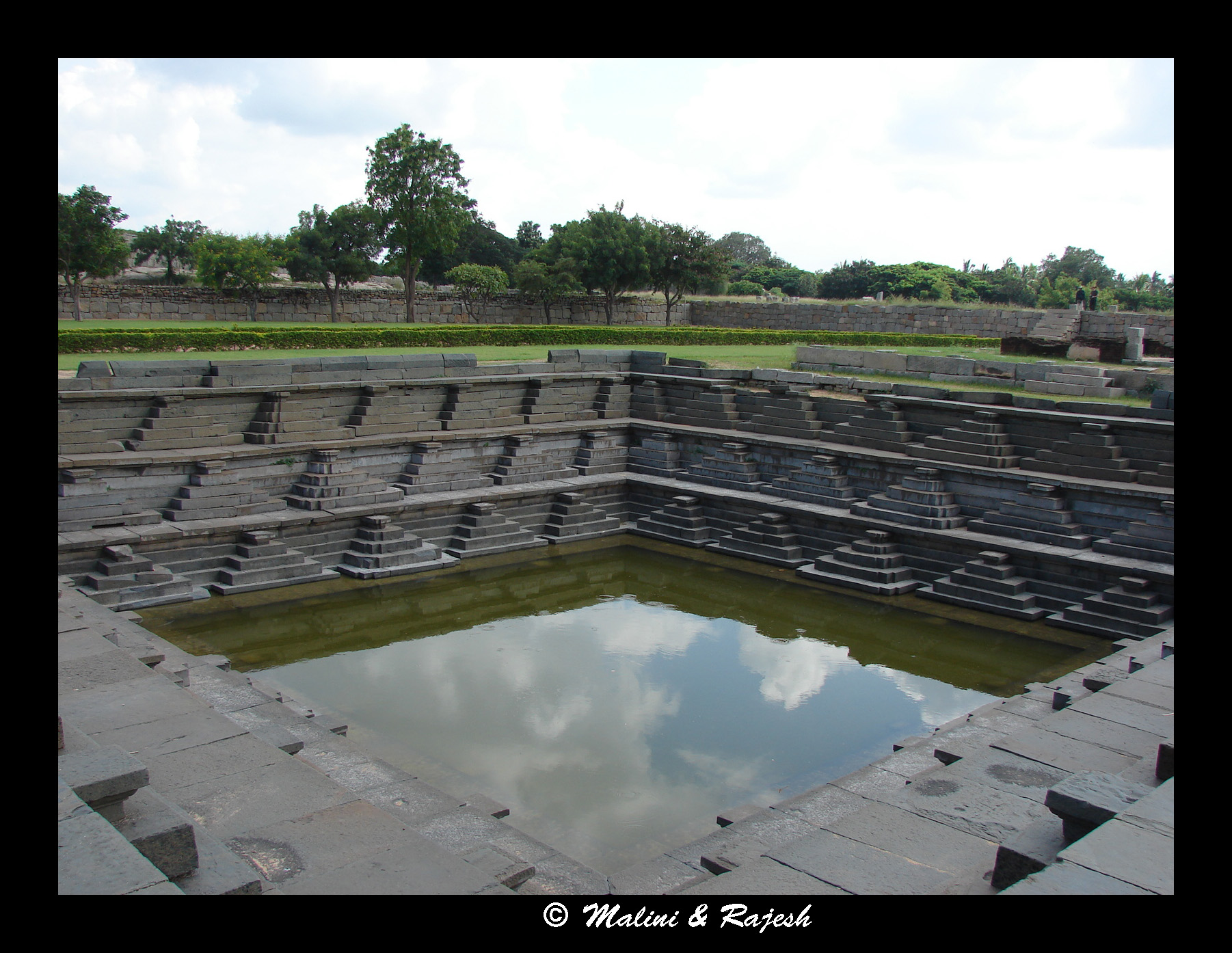
It was almost 2 pm and we were famished. Our lunch was arranged at Mayura Bhuvaneshwari.
Vittala temple
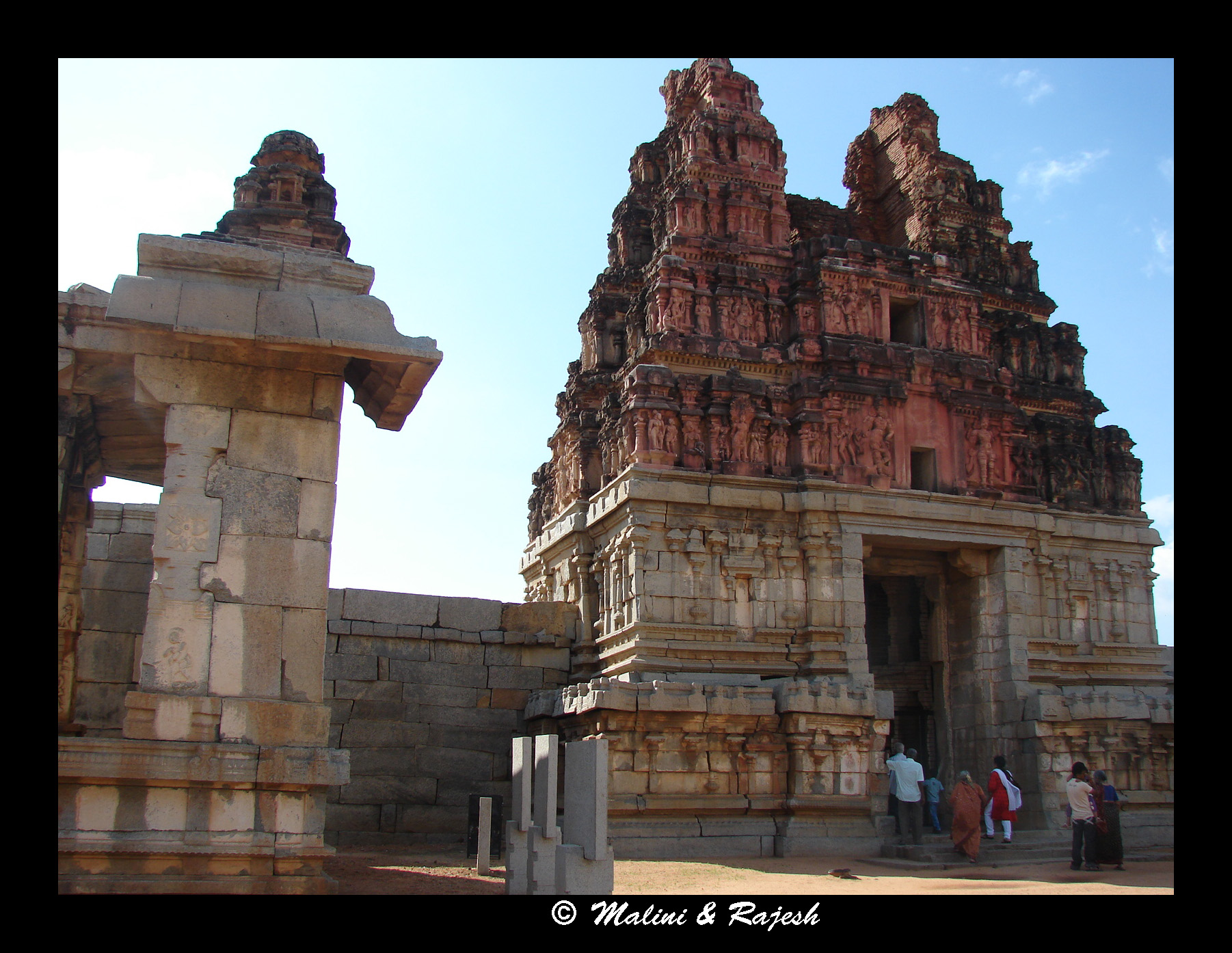
After lunch, the bus took us to Vittala temple.
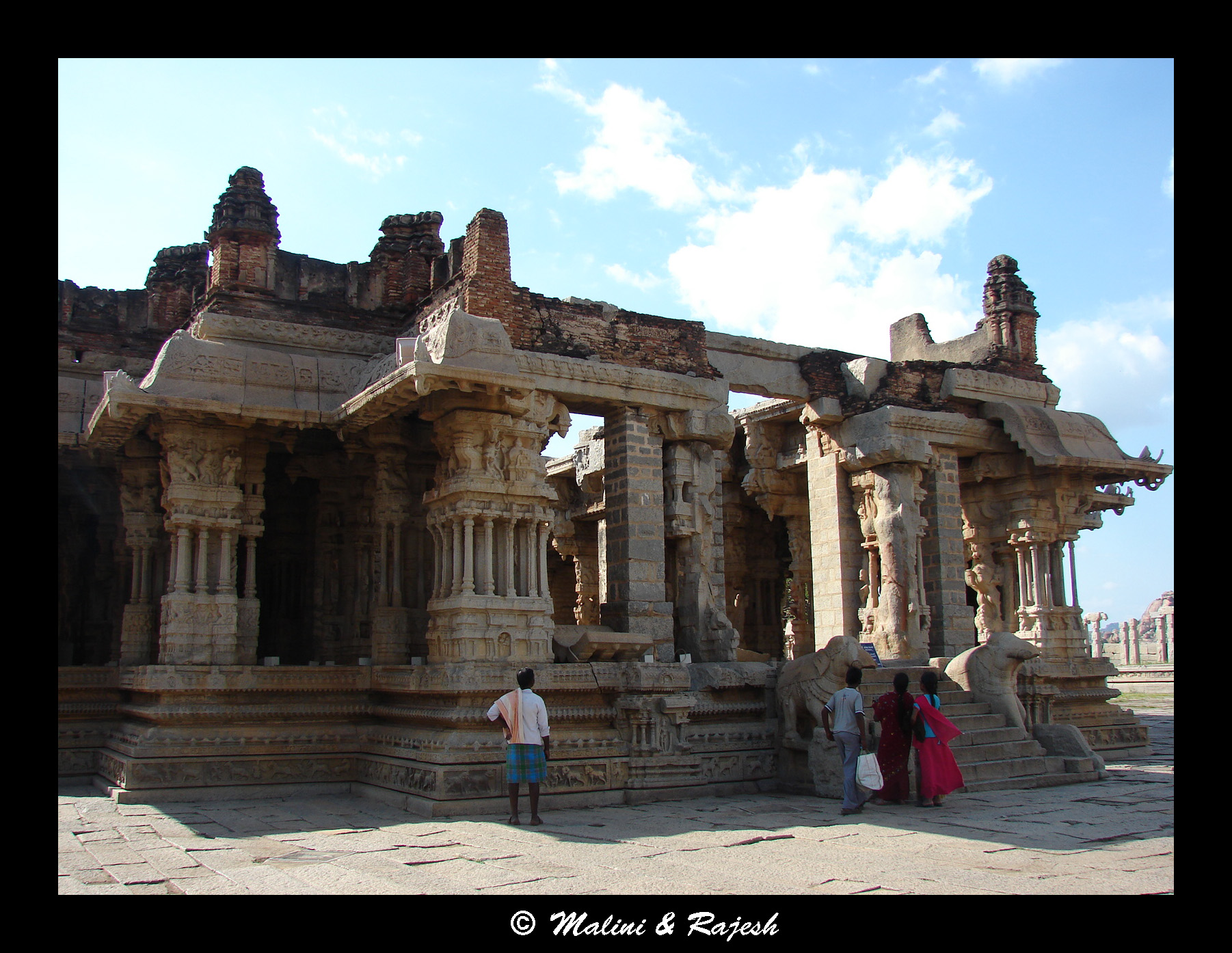
The Vittala temple complex is another architectural showpiece. Vittala temple is built within a walled enclosure and, just like the Virupaksha temple, has huge pillared Mandapas on all sides and towering Gopuras overlooking the complex.
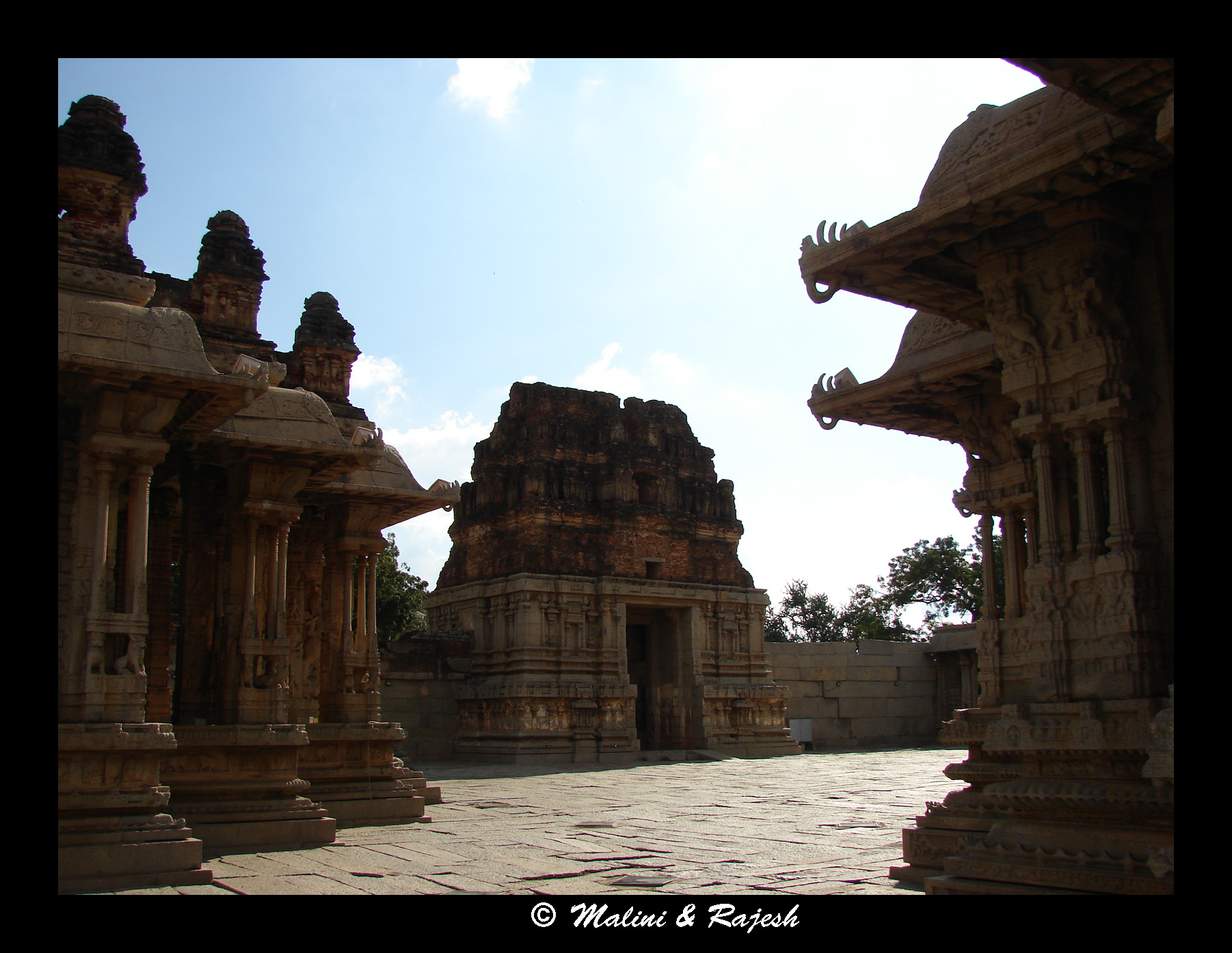
The Mandapas have numerous beautiful carvings and stand on ornate platforms. One such carving took our breath away. It looks like an elephant from the right and a bull from the left.

The highlight of Vittala temple is the stone chariot. This iconic structure is the symbol of Karnataka tourism.
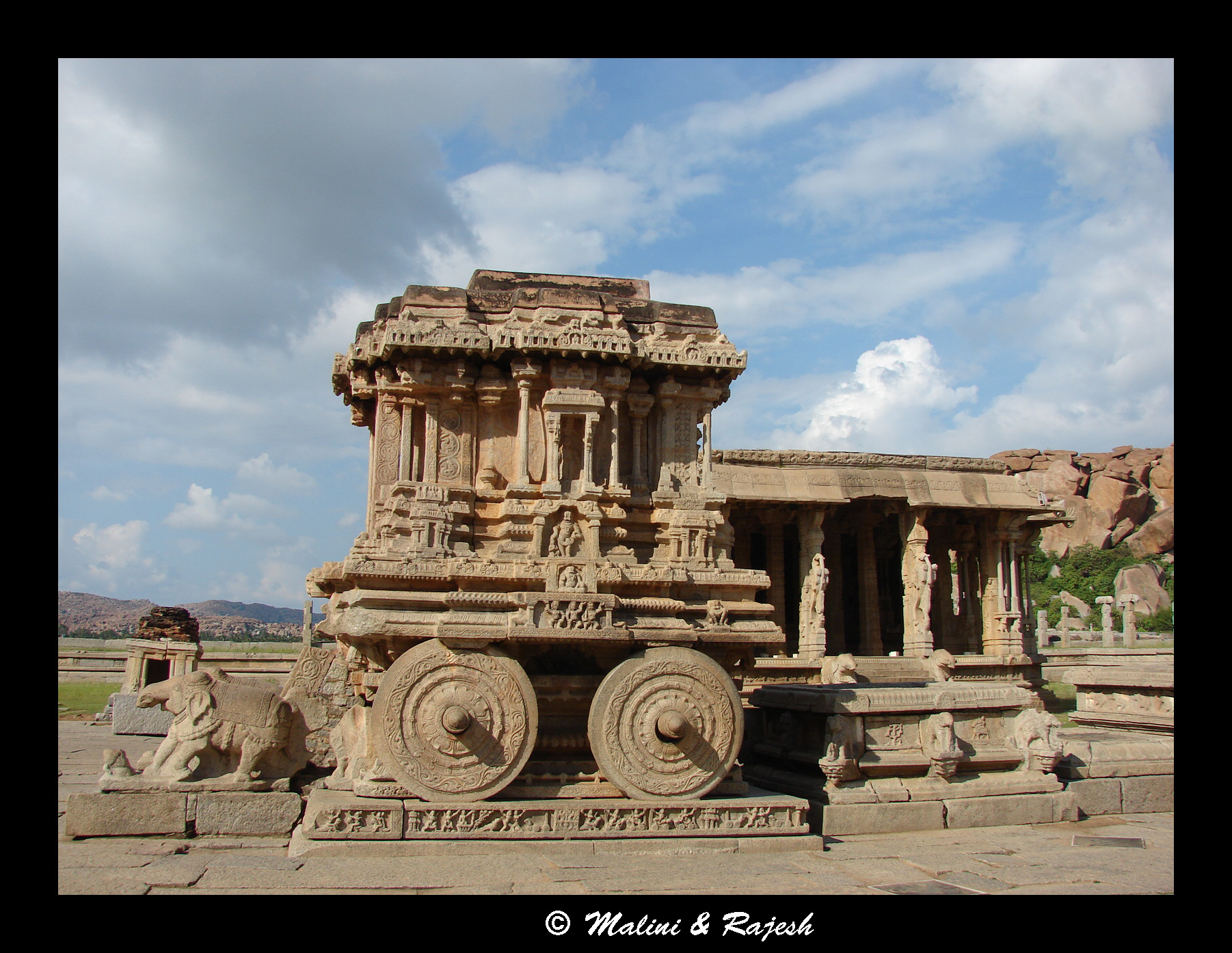
By the time we had walked around the complex, it was 6 pm and we decided to call it a day.
A walk through Hampi can be both mysterious and rustic. The boulders, the fallen temple stones, the broken palace basements – all have a story to tell. But we wanted to find some of those stories on our own. We had 2 more days in Hampi and we had already made up our mind.
We were going to explore Hampi not as tourists but as travellers for the next two days. Day 2 was going to be on foot.


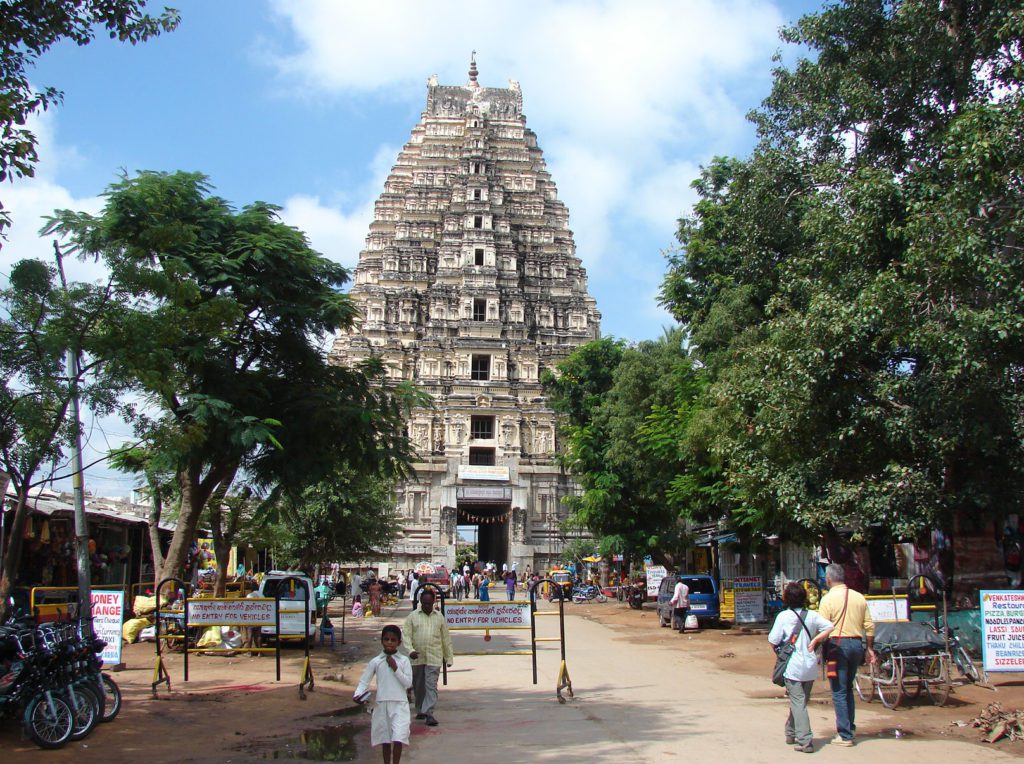


9 Comments
Nice pics. The elephant and bull one is really good. I liked “Hair Coloru” 🙂
Thanks Subhadra.
malini, i think travel n photography should be married to each other cuz they are so inseparable 🙂 loved your blog
Thank you Sulagna. And you are right, travel and photography are inseparable. Sometimes I get so engrossed in the photography that I tend to see places only through my camera lens and forget to enjoy the scenery. But that’s the whole point. Isn’t it?
What a beautiful indepth narration amply supplemented with amazing clicks! Loved it! Would definitely love to be in Hampi someday 🙂
Thank you Arti for your comments. Hope you visit Hampi one day.
luved it oppole..perfect way to pen a blog…the right mix of photos and write-ups..thats one heck of a Hampi tour..!!
and w.r.t ur earlier comment above regd seeing places thru the camera lens…thats very true..even I have the same tendency to see things from the camera point of view and then miss out on the actual beauty that we can see and take in with our eyes !! 🙂
Thanks Tupdoos for the comments.
Malini,
I am happy to nominate you for a blogger award. Please visit the link to know more http://nishdil.blogspot.com/2011/12/award-for-me.html
Regds,
Nisha